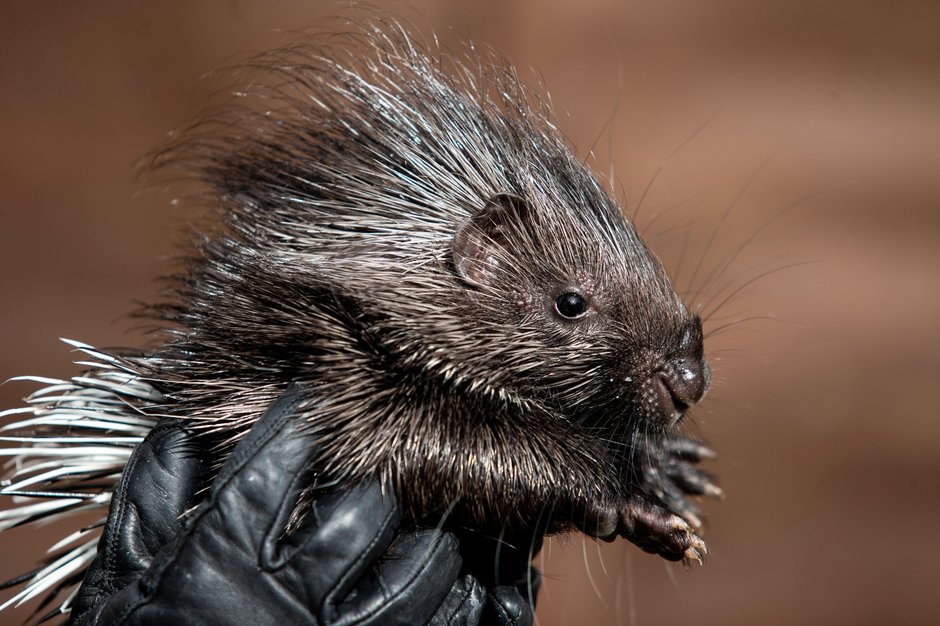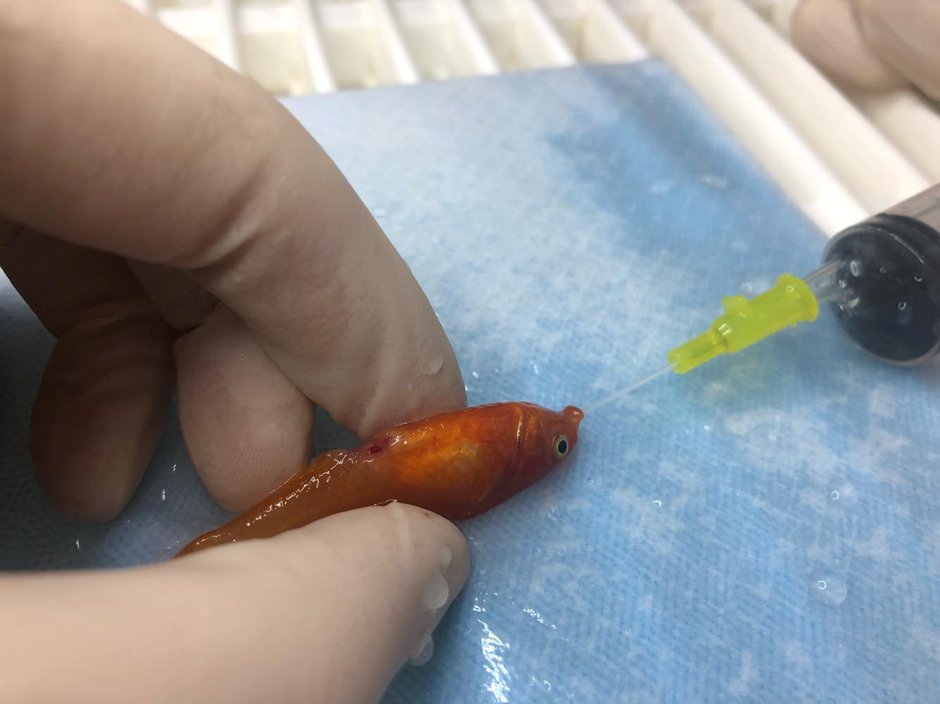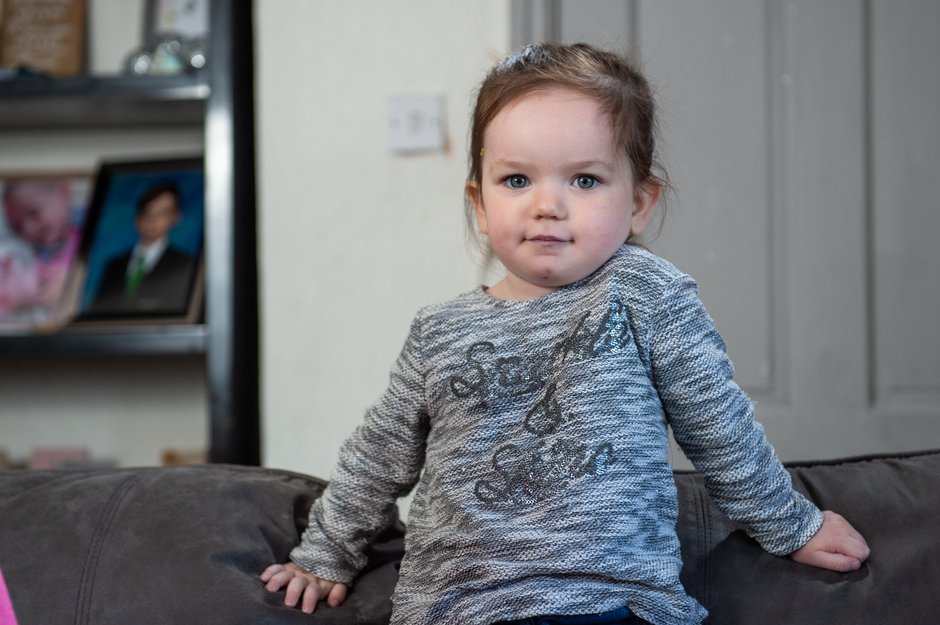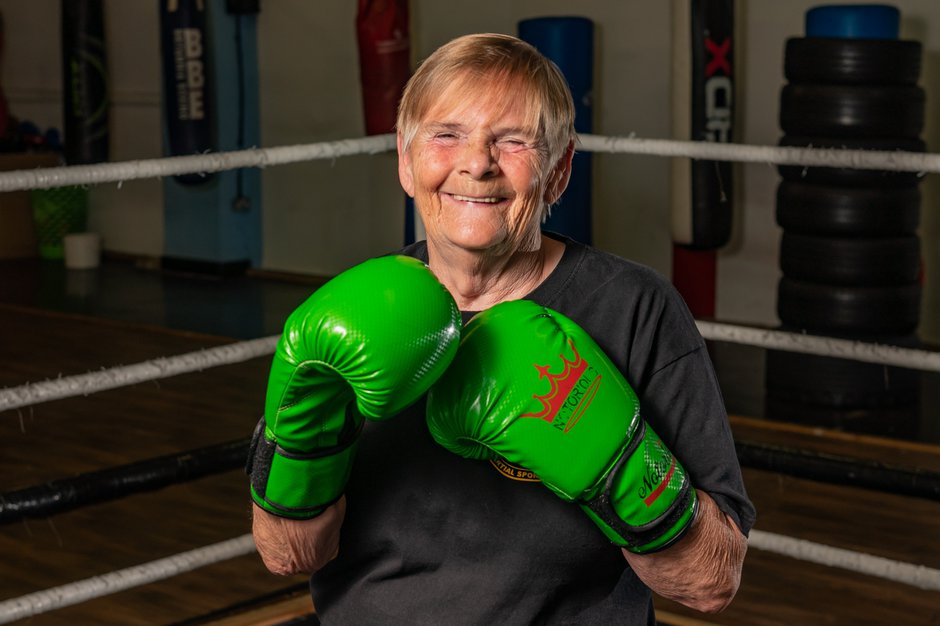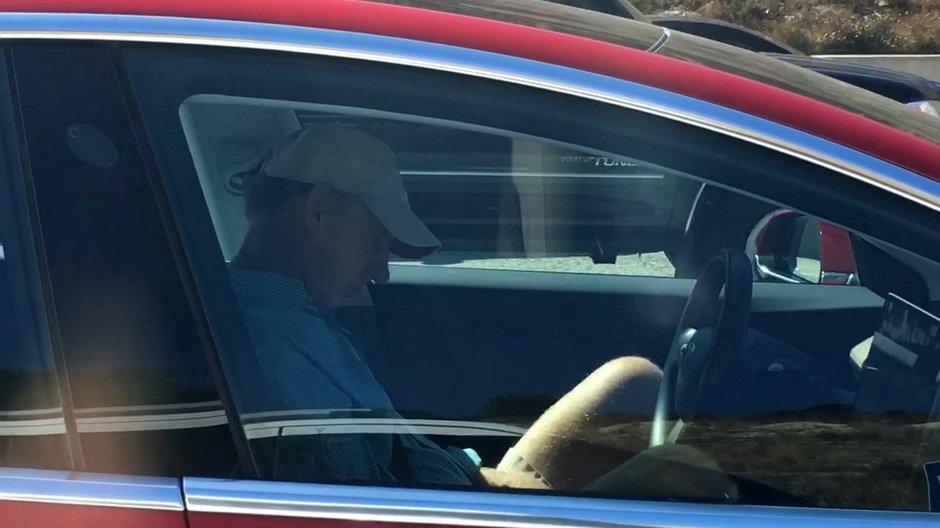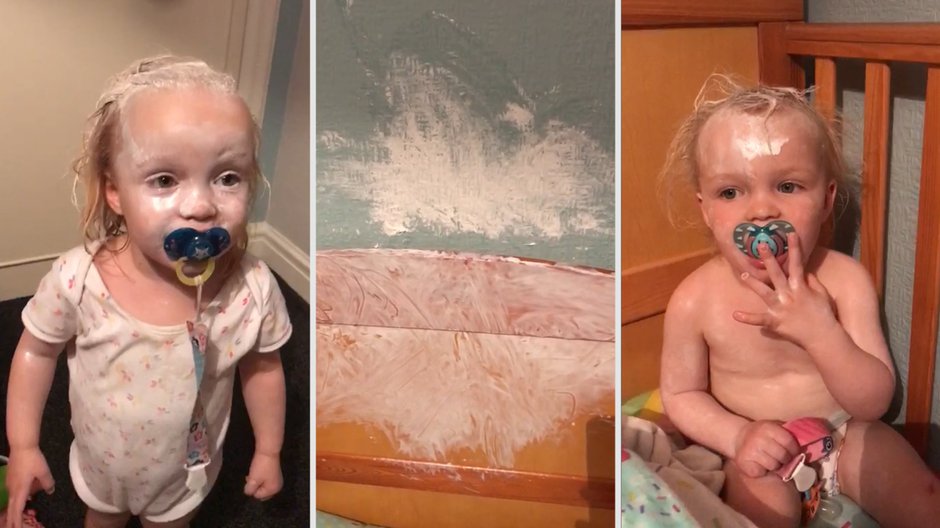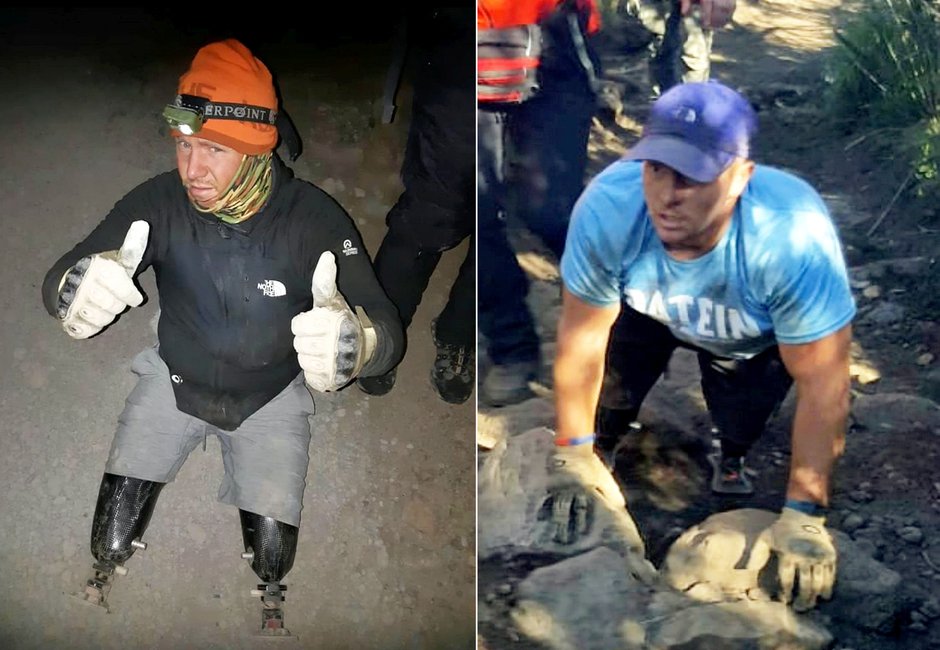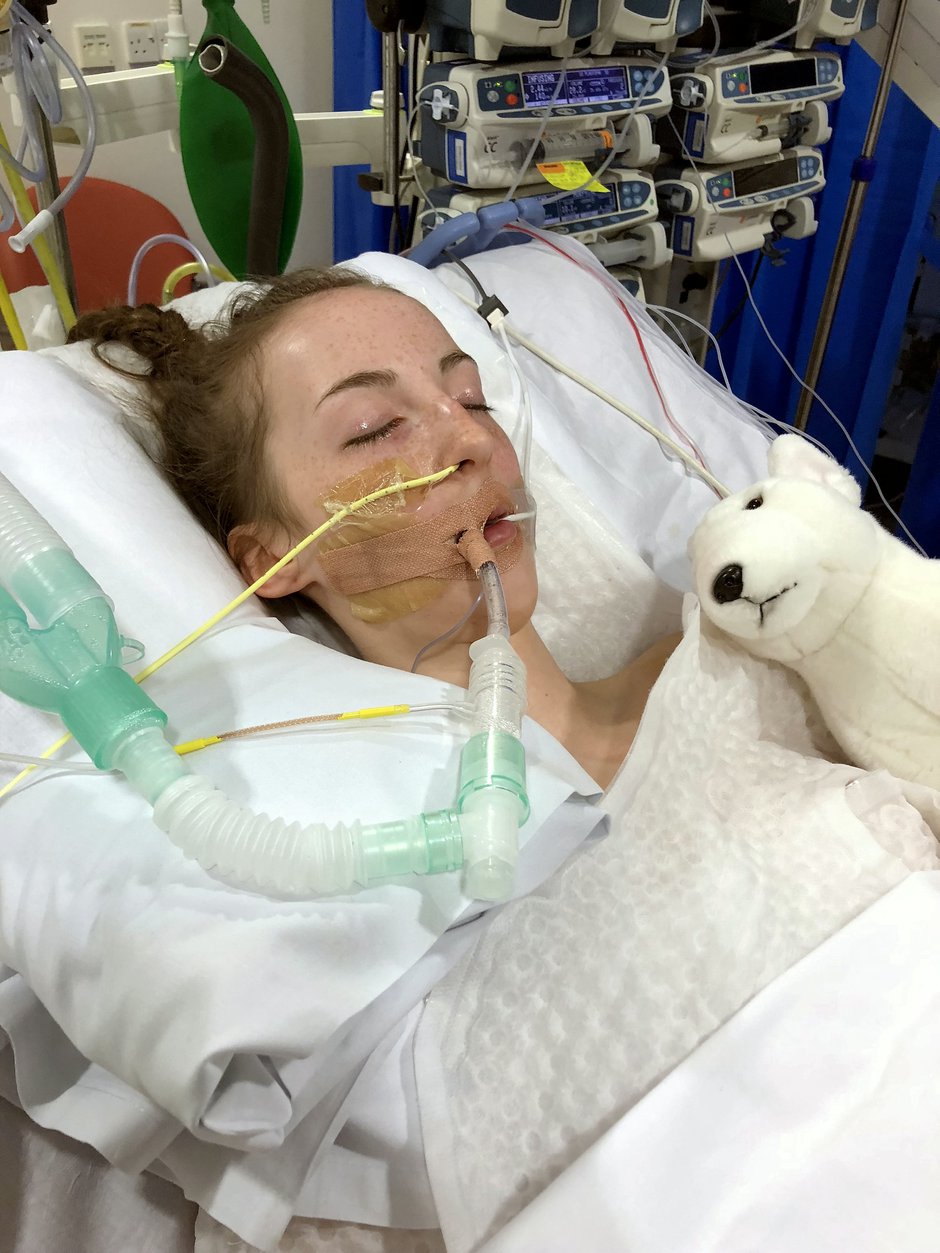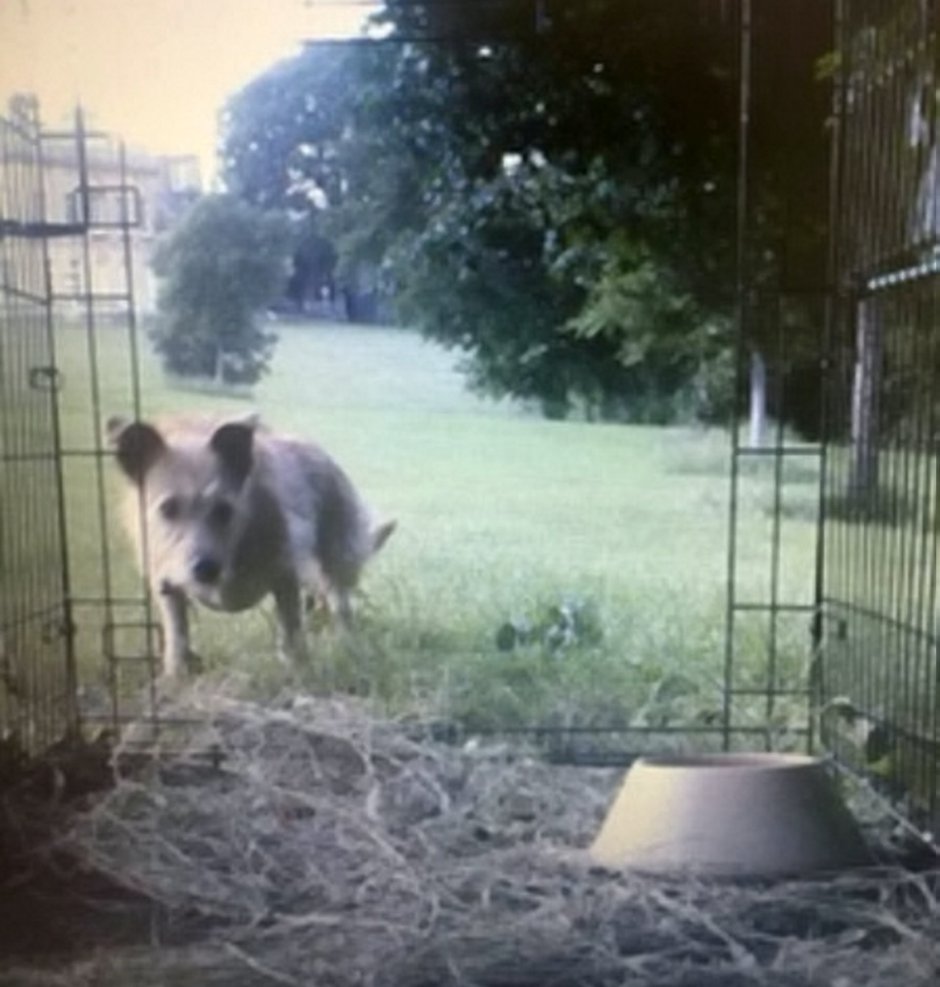Diablo the baby porcupine and Fig the sausage dog are the best of friends
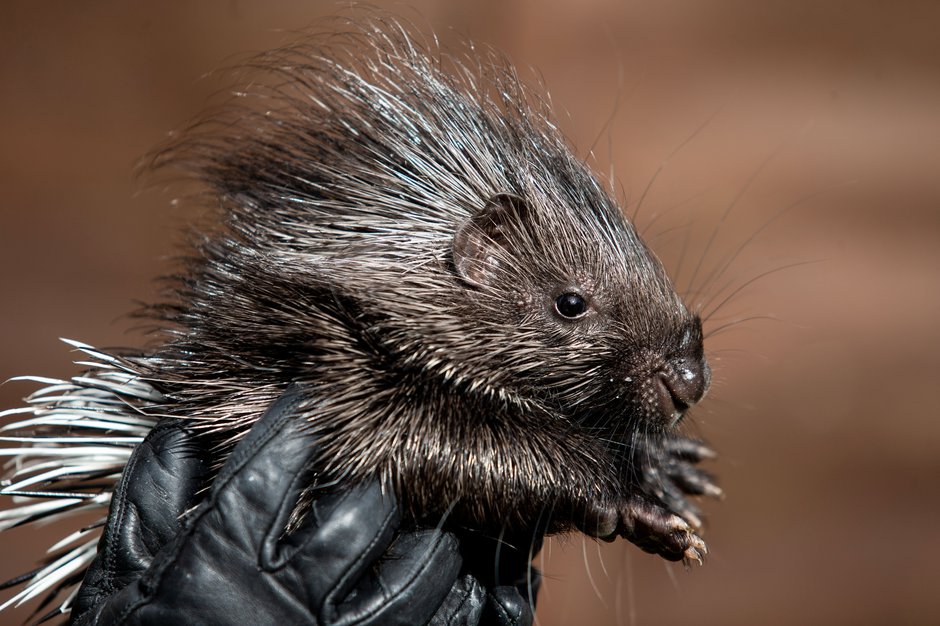 Image by: Tom Wren SWNS
Image by: Tom Wren SWNS 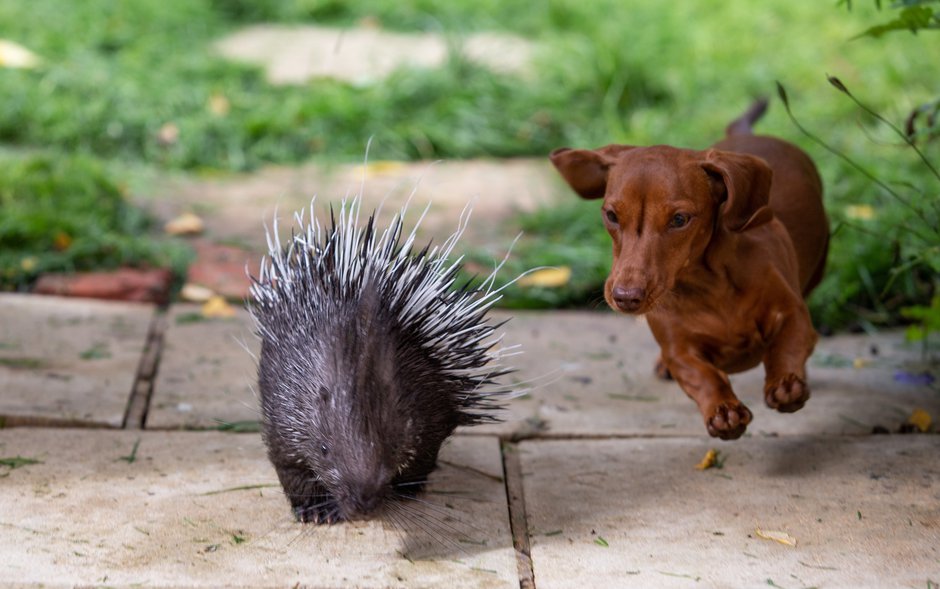 Image by: Tom Wren SWNS
Image by: Tom Wren SWNS
A pair of best friends could end up in a sticky situation if their rough-and-tumble goes too far - because a sausage dog is pals with a baby porcupine.
Porcupette Diablo made friends with little puppy Fig under the watchful eye of surrogate mum Estelle Morgan, who is hand-rearing the spiny little critter because he got rejected by his mum.
Zookeeper Estelle took the tiny porcupette home to give him the best chance of survival when his mum Hannah rejected him at Cotswold Wildlife Park in Oxfordshire.
When Diablo was just a few days old, Estelle introduced him to her puppy Fig for some company and essential social interactions to help his development, and the pair soon became best friends.
The prickly pair now spend all day playing together, but will only have a few more days before Diablo has to leave - and go back to the zoo.
Estelle said: "It’s safe to say they have become best friends.
"When Diablo gets excited he will do a buckaroo-style run, where he thrashes his head around and jumps up in the air.
"Under close supervision, they will run around the garden together and Fig has been very gentle and patient with Diablo."
Diablo was born to parents Hannah and Prickle at Cotswold Wildlife Park in Burford.
But the decision was made to hand-rear the baby porcupine when his mother rejected him.
She said: "Hannah previously had twins in February that she is still caring for, so it is likely she wasn’t really ready for another baby so soon.
"His unexpected arrival was a big surprise for all of us."
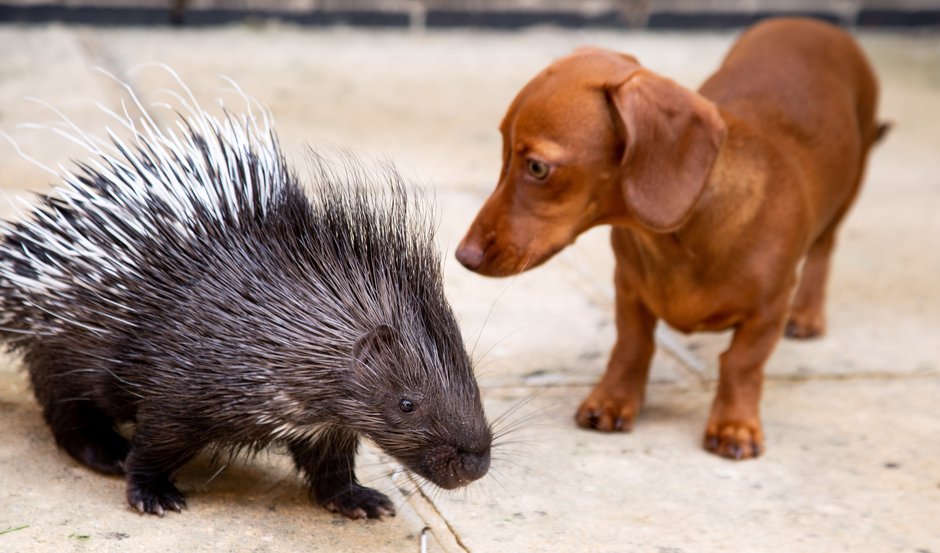 Image by: Tom Wren SWNS
Image by: Tom Wren SWNS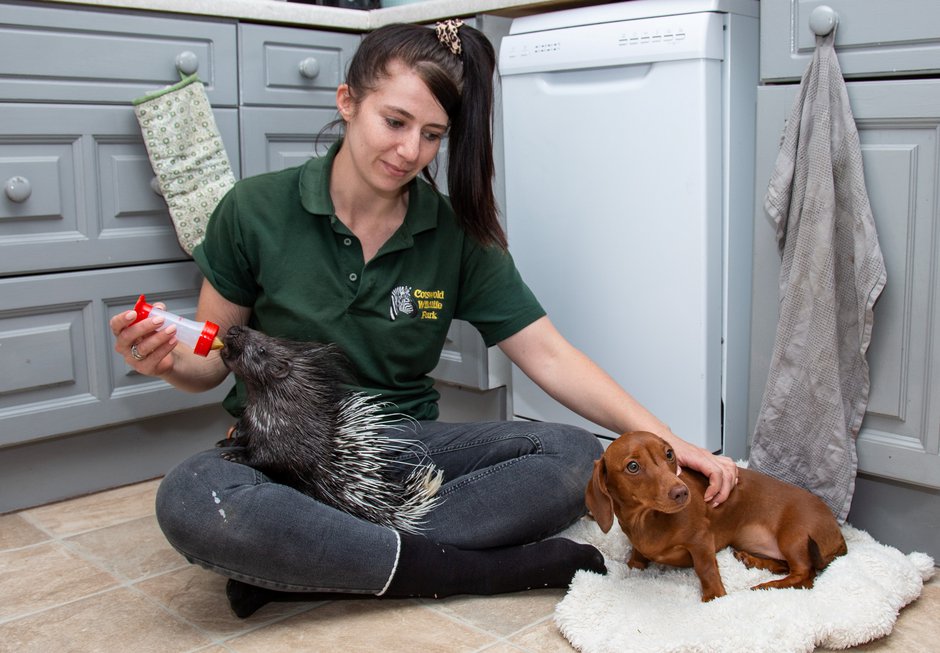 Image by: Tom Wren SWNS
Image by: Tom Wren SWNS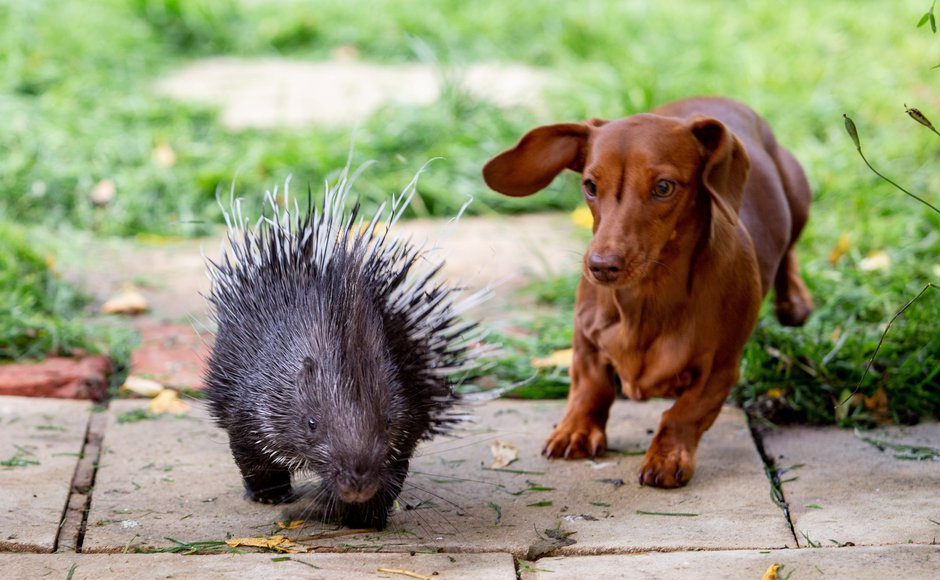 Image by: Tom Wren SWNS
Image by: Tom Wren SWNS
Little Diablo was very feisty from birth but is now showing his softer side and building his social skills with best buddy Fig.
He is currently being bottle-fed by Estelle in her kitchen at her home which is located within the wildlife park.
Estelle said: "When Diablo was first born he was very feisty and wasn’t scared to give me a nip.
"However now he has settled into a good routine and will comfortably follow me around the kitchen and will even come to me for reassurance."
When Estelle began hand-rearing Diablo, he weighed just 300g and has grown to a whopping 1.8kg.
For the first month, he was fed one bottle every two hours to get him into a good routine.
But at six weeks old, he is now tasting solid foods and has developed a liking for apples and sweet potatoes.
Estelle said: "My most stand out moment hand-rearing Diablo was when he latched on and suckled on his own from the bottle for the first time.
"This happened when he was three days old and was just a huge relief for me - the first few days are always worrying.
"Now, at six weeks old, he is tasting solid foods - sweet potatoes and apples are his favourites - so he can go longer in-between feeds which also means I’ve been able to get more sleep."
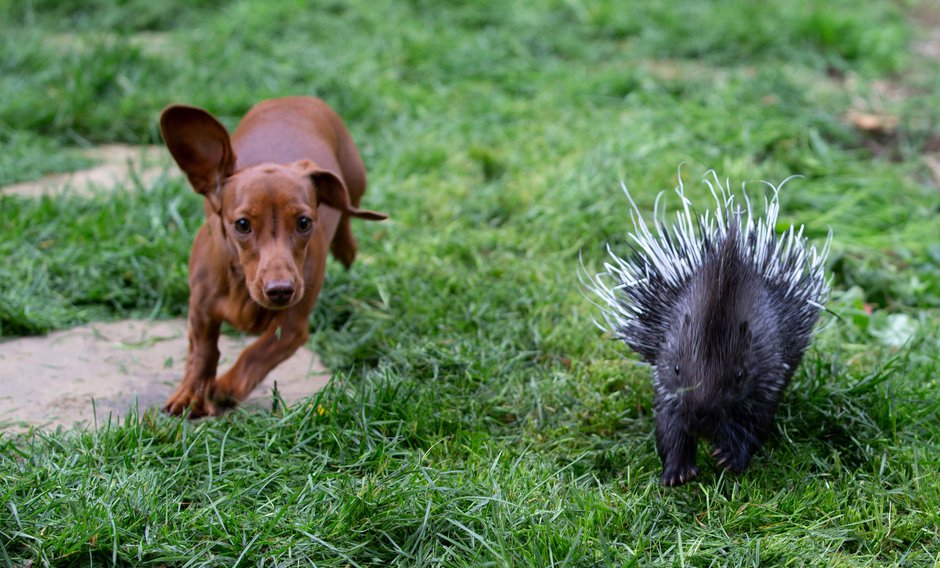 Image by: Tom Wren SWNSVideo by: Tom Wren SWNS
Image by: Tom Wren SWNSVideo by: Tom Wren SWNS
FIN-TASTIC - Vets operate on their smallest patient ever after performing a procedure on a goldfish weighing less than A GRAM
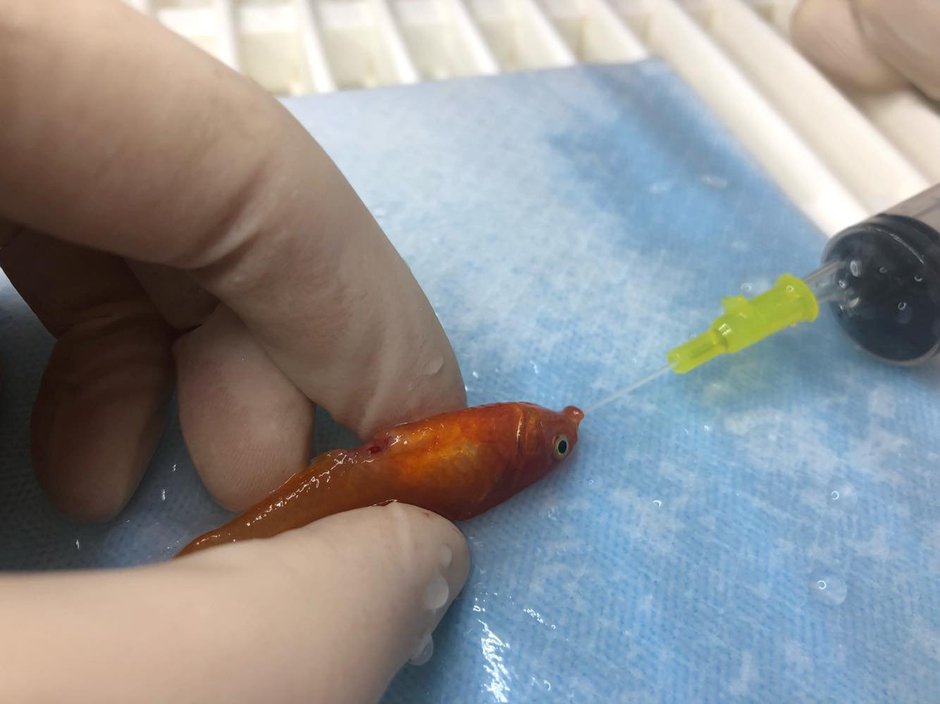 Image by: Matthew Newby SWNS
Image by: Matthew Newby SWNS
A vet has done a UK first by operating on its smallest patient ever after performing a delicate procedure on a 'gold fish' -- weighing less than A GRAM.
Little Molly - named after its species - was rushed into the practice after its owners noticed a large lump on its belly.
Staff at Highcoft Rabbit, Small Mammal & Exotic Vets, Bristol, immediately diagnosed a tumour and prepared Molly for surgery.
The emergency procedure saw vets catheterised the gold fish's mouth before anaesthetising the molly and removed the mass within 40 minutes.
The vets - who normally operate on the likes of iguanas, snakes and crocodiles - says the 1g 'goldfish' is the smallest animal to go under the knife.
The operation - which cost less than £100 - was hailed a success after Molly woke up within minutes of the anaesthetic being removed and returned home to its tank later that day.
Exotic species vet Sonya Miles said: "It's not common across the UK to bring your fish to the vets but it is here. We are seeing more and more fish which is great.
"It used to be the odd one or two every few months but more and more people are realising we are happy to see them.
"Although it looks like a goldfish its actually an exotic fish from the molly species although it does look incredibly like a goldfish.
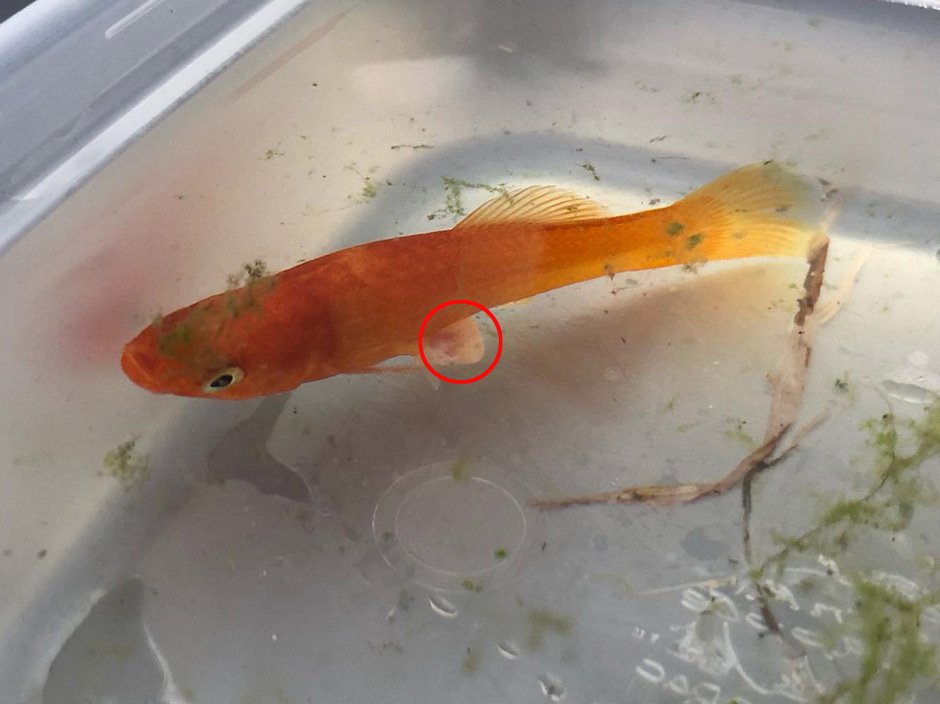 Image by: Matthew Newby SWNS
Image by: Matthew Newby SWNS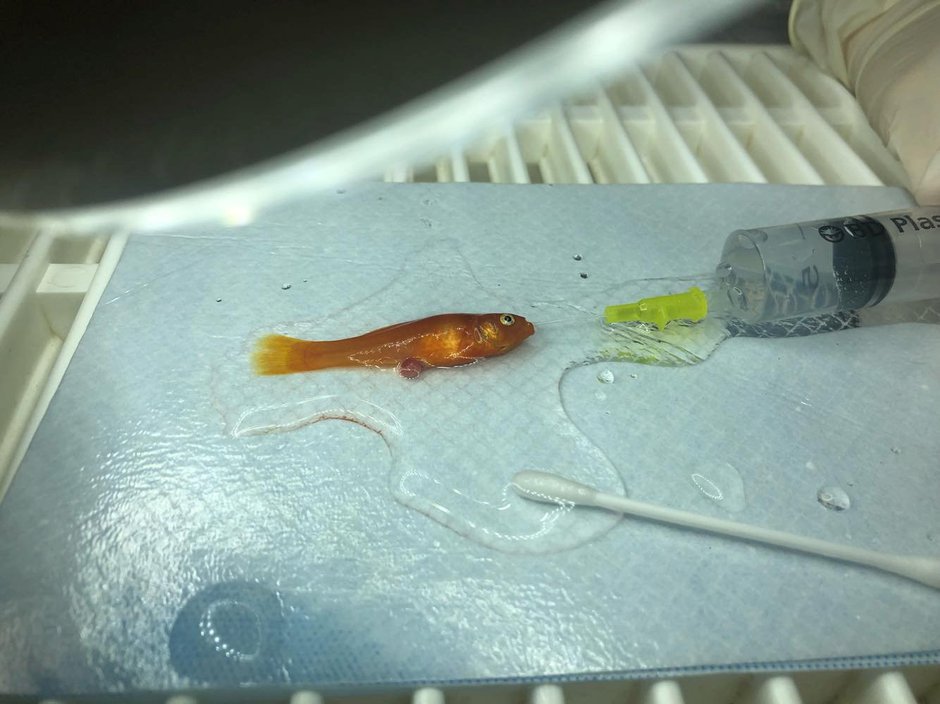 Image by: Matthew Newby SWNS
Image by: Matthew Newby SWNS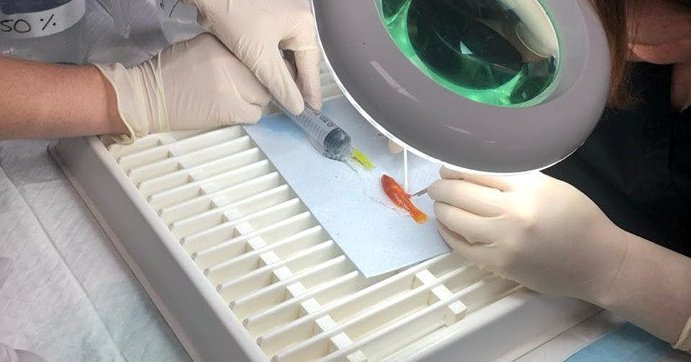 Image by: Matthew Newby SWNS
Image by: Matthew Newby SWNS
"A couple had been given the molly fish by an elderly neighbour but after a few weeks they noticed a lump on her underbelly and brought her in.
"It was definitely the smallest animal we've seen here. It barely registered on our scales.
"Both modern and veterinary medicine has advanced over time so we're able to perform
"It's a pretty simple procedure and took no longer than thirty or forty minutes. We submerged the fish in a container of anaesthetic solution.
"Once the righting reflex is lost and the fish is asleep it was the laid on the operating area.
"The fish is kept wet (which makes the puddle), the mouth is catheterised and different concentrations of anaesthetic are injected over the gills to keep the fish at a stable level of anaesthesia.
"The area covered with a water proof paste as stitching the skin closed isn’t a possibility. The fish was then woken up in fresh oxygenated water.
"The operation was a success as we were able to remove the tumour before it started to upset its balance.
"You definitely have to have steady hands and good eyesight. It was definitely a team effort.
"We're glad to have been able to help the fish before the tumour started to upset its balance."
 Image by: Matthew Newby SWNS
Image by: Matthew Newby SWNS
BATTERY OPERATED - Two-year-old girl lucky to be alive after going to hospital for scheduled appointment - only for doctors to find a life-threatening battery lodged in her throat
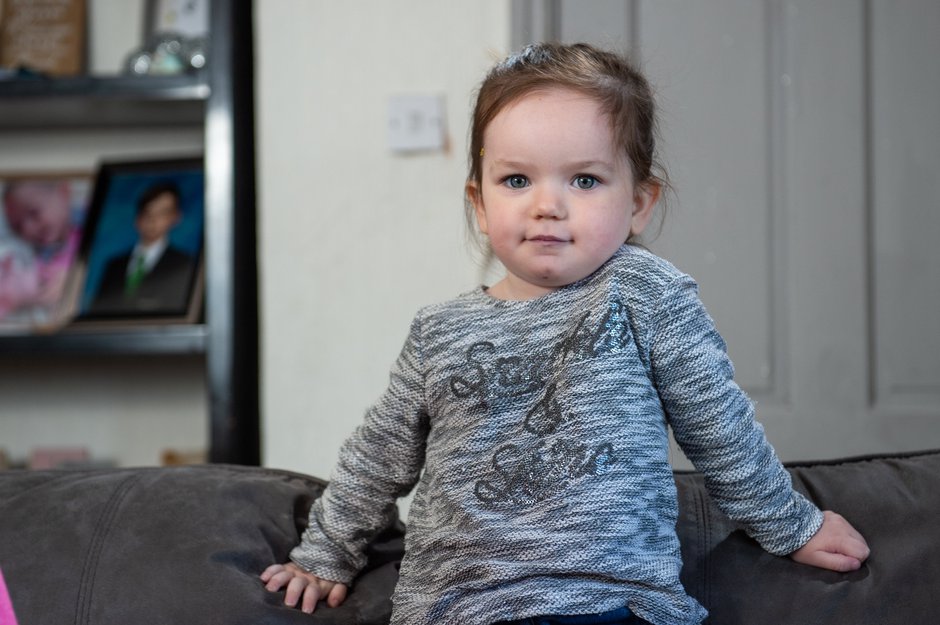 Image by: Alex Cousins SWNS
Image by: Alex Cousins SWNS
A two-year-old girl is lucky to be alive after going to the hospital for tummy ache - only for doctors to find a life-threatening battery lodged in her throat.
Little Elsie-Rose was so close to death that her mum, Kirsty Duffy, was told to give her "one last kiss" before she underwent an operation to remove it.
It turned out Elsie-Rose had swallowed a dangerous penny-sized lithium battery within the last 24 hours.
At first medics thought it could be a penny, but a further x-ray revealed a battery had become lodged in the top of her oesophagus, located around the chest area.
Doctors at Sheffield Childrens' Hospital, South Yorks., told her it was critical as the electrical current was mixing with saliva to produce caustic soda, rapidly burning a hole in her throat.
Swallowed batteries can cause catastrophic internal bleeding and death within hours and Kirsty was told it needed to come out immediately.
Elsie-Rose was rushed to Leeds General Infirmary for emergency surgery.
Kirsty said: “The surgeons told me her chances of survival were like her walking across a motorway without getting hit by a car or lorry. I couldn’t believe it.
“They told me to give her ‘one last kiss’ and although I was devastated and in shock at the time, I just did my best to be strong for her.”
The surgeon who operated on Elsie-Rose, managing to remove the battery with minimal damage, told single mum Kirsty her little girl was "lucky to survive something she should not have survived".
Throughout, mum-of-four Kirsty was so overcome with adrenaline that it was only when she arrived home to Barnsley, South Yorks., after spending five days in intensive care, that she burst into tears.
Full-time mum Kirsty said: "I can't believe I nearly lost my little girl. This could have had a very different outcome.
"I could have been arriving home without her. It doesn't bear thinking about."
 Image by: Alex Cousins SWNS
Image by: Alex Cousins SWNS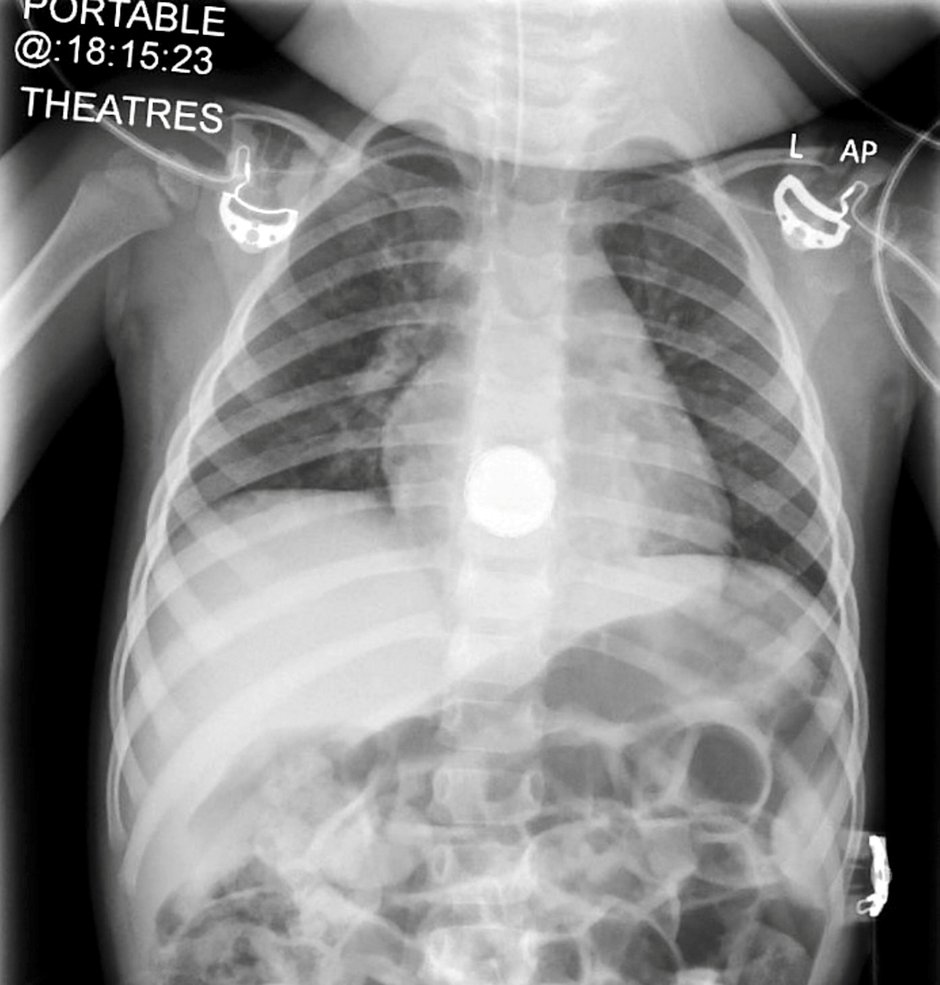 Image by: Alex Cousins SWNS
Image by: Alex Cousins SWNS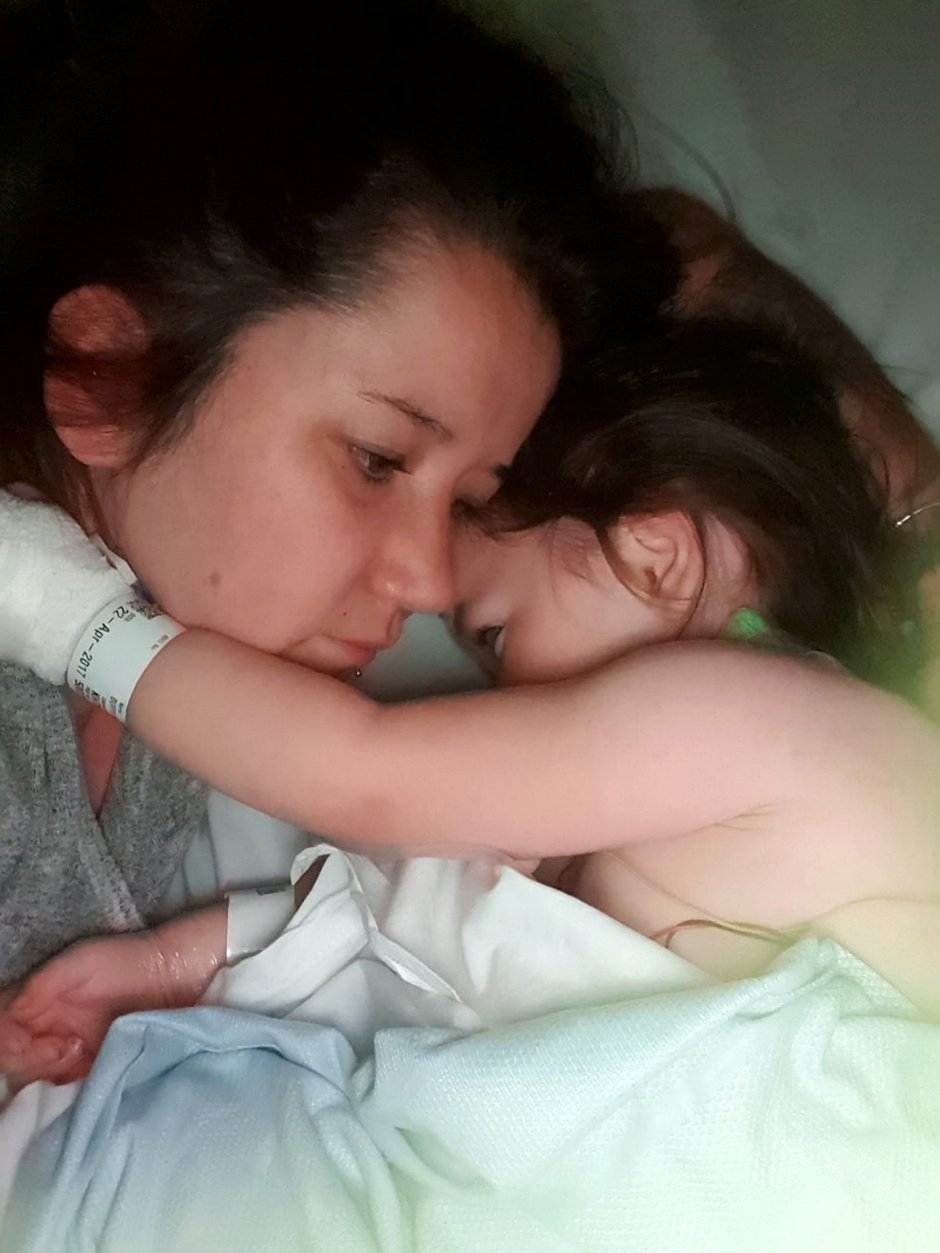 Image by: Alex Cousins SWNS
Image by: Alex Cousins SWNS
Bright Elsie-Rose had been suffering with tummy ache for several months and Kirsty had visited her doctors a few times, each time being told Elsie had an infection.
But when Elsie-Rose's condition deteriorated after having problems eating, Kirsty demanded a hospital appointment, scheduled for August 29.
Kirsty said: "Elsie-Rose was gradually getting worse, she is very bright so had often told me 'Elsie's poorly'.
"On the night before her appointment she had said 'Elsie feeling sick' but I just put it down to the continuing problem - which turned out to be constipation - I did not know she had swallowed a battery.
"It was by a stroke of absolute luck that her hospital appointment was the next day."
Kirsty has no idea where Elsie-Rose had picked up the battery from, thinking it could be from any number of toys owned by her brothers and sisters, Bradley Bird, 12, Amelia Duffy, seven, and Alissia Duffy, six.
“She’s not the type of toddler who puts items in her mouth usually so I didn’t know what had happened," said Kirsty.
"In no way would I have thought batteries would be a good thing to swallow, but never would I have thought that it could kill a child.
"It is so important that parents keep these out of reach of children."
Elsie-Rose is now on medication to heal her throat and she is expected to make a full recovery.
Kirsty said: "We are still having to sort out her other problem, though eating really soft food, to help her throat, has helped her a lot.
"She seems back to her normal self, which is such a relief to see."
Mike Thomson, Consultant Paediatrician specialising in gastroenterology at Sheffield Children’s NHS Foundation Trust, said: “Button batteries are incredibly dangerous and can cause severe injury within hours of young children swallowing them.
“There has been a rise in children across the UK being injured as a result of button battery ingestion.
“The easy to open packaging for these buttons and their use in toys means that parents and carers often aren’t aware if a child has access to them.
“We recommend that any button battery is safely secured within the toy or item or kept out of reach from children.
“If you suspect a child has swallowed a button battery then you must seek immediate medical attention either at a local emergency department or paediatric hospital so that it can be removed.”
Batteries can be found in toys, remote controls, car keys, musical greetings cards, calculators and weighing scales.
Katrina Phillips, Chief Executive of the Child Accident Prevention Trust said: “Elsie-Rose has had a miraculous escape.
“If a lithium coin cell battery gets stuck in a child’s food pipe, it can cause catastrophic internal bleeding and death within hours of being swallowed.
“Symptoms often aren’t obvious until it’s too late, which is why a battery can go undetected for so long.
“That’s why it’s so important to know where powerful lithium coin cell batteries are in your home – in products as well as spare and ‘flat’ batteries – and keep them well out of reach of small children."
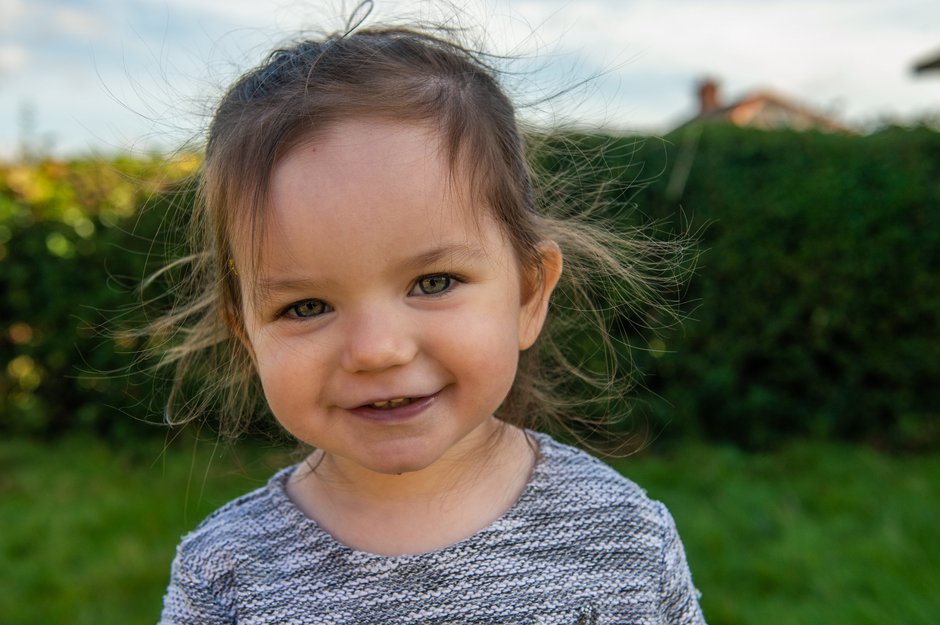 Image by: Alex Cousins SWNS
Image by: Alex Cousins SWNS Image by: Alex Cousins SWNS
Image by: Alex Cousins SWNS
BASE JUMPING HORROR - A base jumper is lucky to be alive after he tumbled 180ft down a mountain when a gust of wind slammed him into a notorious rock face
A base jumper is lucky to be alive after he plummeted 180ft when a gust of wind slammed him into a notorious cliff face.
Sam Percival, 35, miraculously survived the horror fall after his parachute spun mid-jump, slamming him into the sheer cliff face at speeds of at least 30mph.
He was attempting to become the first person to jump off Lord Berkeley’s Seat in An Teallach, in the Scottish Highlands - which has claimed the lives of THREE walkers this year alone.
A shocking video shows how after jumping, while he free-fell 200ft, a gust of wind spun him round into the cliff face, partially deflating his parachute.
The brave adventurer then plummeted a further 180ft - the equivalent of 14 floors - before he landed on a rocky outcrop.
Sam was pummelled by falling debris - and then had to climb for hours to get help.
Rescuers were amazed he survived the accident, and miraculously he's now recovering at home with just a few sprains, cuts and bruises.
Lucky Sam, an outdoor instructor, from Horwich, Lancashire, said he feels lucky to be alive - while rescuers said that was "something of an understatement."
Sam, who lives in Aviemore, in the Highlands, said: "It felt like being in a washing machine filled with boulders.
"I struck the cliff at about 30mph.
"I tried to get hold of a ledge but I kept accelerating towards the floor of the gully.
"The canopy was reducing my speed, but it wasn't supporting me.
"Next I hit the bottom of the gully, 180ft from where I struck the cliff.
"I was underneath a pile of boulders that had come down with me.
"My clothes were in shreds.
"At first I thought that adrenaline must be masking something, but I managed to get to my feet and basically all I have is a sprained ankle and wrist.
"I'm a very, very lucky man. People keep saying I should buy a lottery ticket, but I think I have already sued up all my luck for this year at least.
"When you are basejumping the worst thing that can happen when you jump is total malfunction - your parachute doesn't open.
"The second worst thing in a 180 - it opens but it opens, for whatever reason, facing towards the cliff.
"Depending on a few things like how long you fall for, or the winds, you have as little as a few milliseconds to do anything about it."
 Image by: Sam Percival
Image by: Sam Percival Image by: Sam Percival
Image by: Sam Percival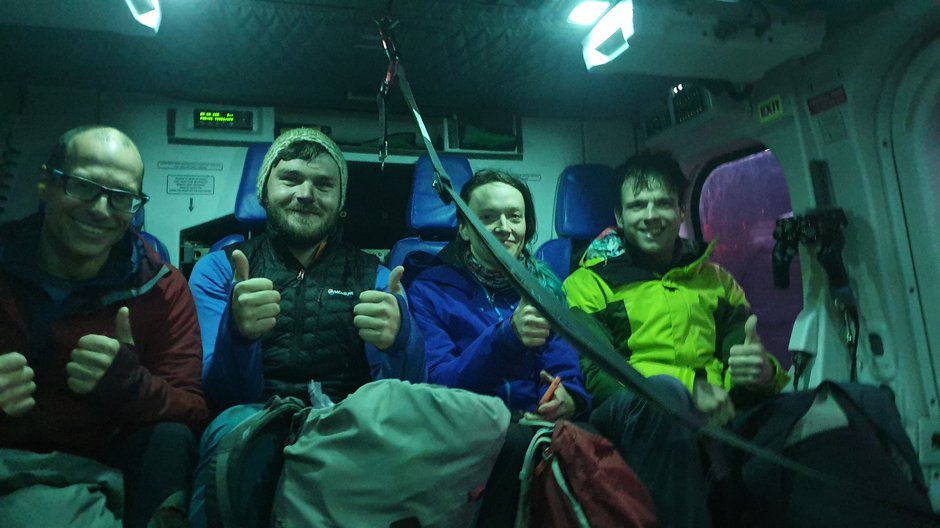 Image by: Sam Percival
Image by: Sam Percival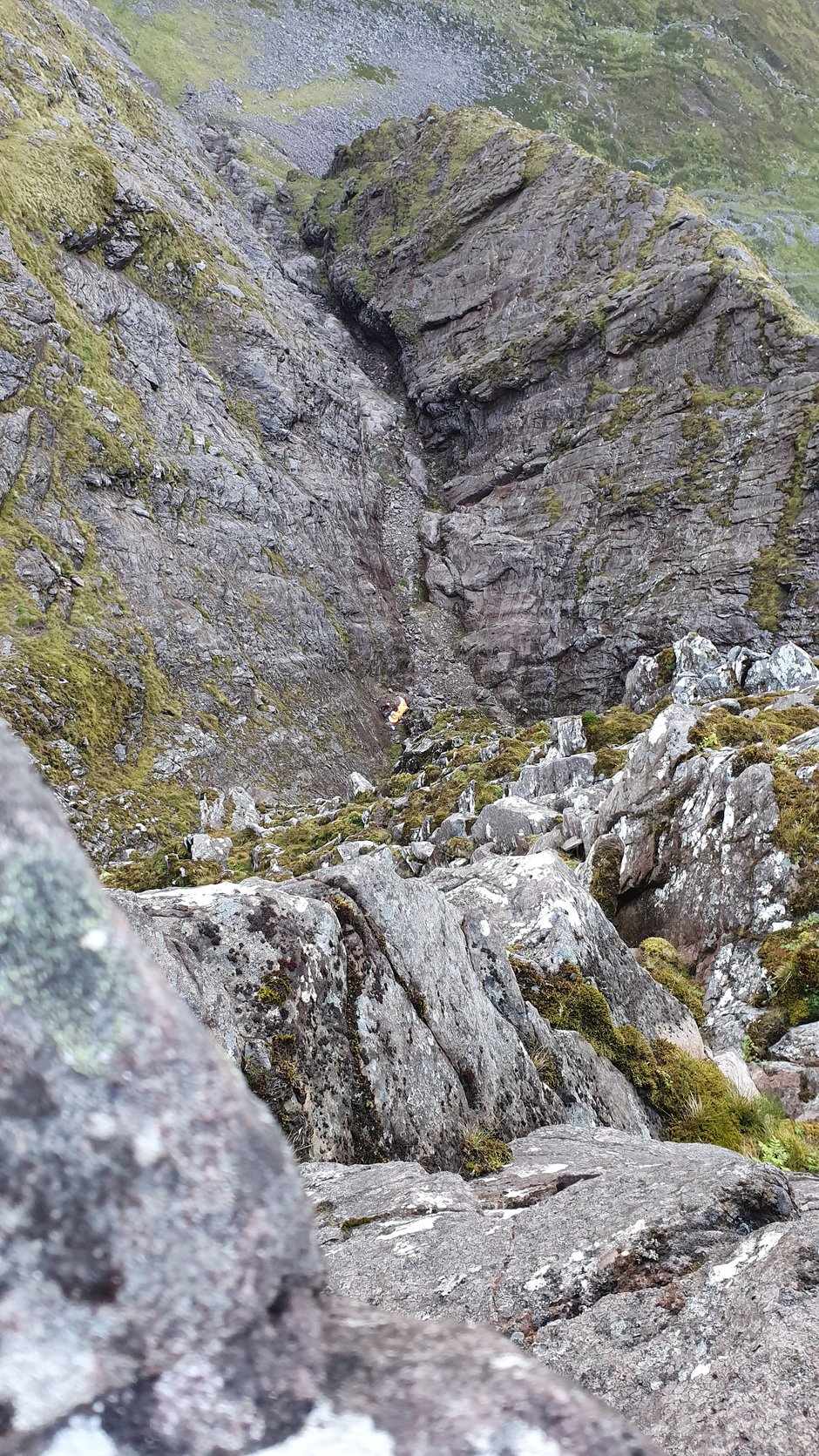 Image by: Sam Percival
Image by: Sam Percival
Sam, who has been base jumping for five years, wanted to be the first person to jump off Lord Berkeley’s Seat in An Teallach, in the Scottish Highlands, on Thursday.
He said he and this friends tested the conditions and he decided to go first, but was caught by a side gust of wind after he threw up his parachute.
"We did push it," he said
"The winds were a bit too high, but I made the decision to jump."
After free-falling 200ft, the gust twisted him 180 degrees into the rock face, so instead of gliding to the bottom of the gully, he slammed into the mountain.
He then tumbled a further 180ft before he slammed into a rock ledge.
Unable to see his expedition buddies, and without any phone signal, one friend made the brave decision to jump after him, while the other climbed down the treacherous mountain.
The group called 999, and then spent two hours climbing to a safe place, where they were met by Dundonnell Mountain Rescue Team and The Inverness Coastguard helicopter.
"When I met the winchman he asked me where the casualty was," said Sam.
"I told him it was me. He replied 'when we heard we were attending a casualty who jumped off Lord Berkeley’s Seat, we were expecting a fatality'."
Sam and his friends were airlifted to the base of the mountain.
He added: "I don't know of anyone falling the distance I have, and coming away with a few scratches.
"I was very, very lucky to survive."
Dundonnell Mountain Rescue Team agreed.
A spokesperson said: “Lord Berkeley’s Seat is 1,030m above sea level and has a mostly vertical drop of at least 500m on its north face.
“After jumping off the peak, the casualty’s parachute was caught by a gust of wind which turned him around and propelled him into the face of the mountain.
"He then slid a short distance before stopping.
“He was then able to climb back up, over steep and very hazardous terrain, to rejoin his companions on the main ridge.
"He was found to have sustained only minor injuries but was evacuated in due course from the mountain by Rescue 151 to Dundonnell MRT base at the foot of the mountain.”
Dundonnell MRT leader Donald Macrae said: “This is the first time we’ve been called out to a base-jumping incident.
“To say this young man is lucky to be alive is something of an understatement. He must have a guardian angel.
"He came very close indeed to a long vertical drop which he would not have survived.”
Video by: Sam Percival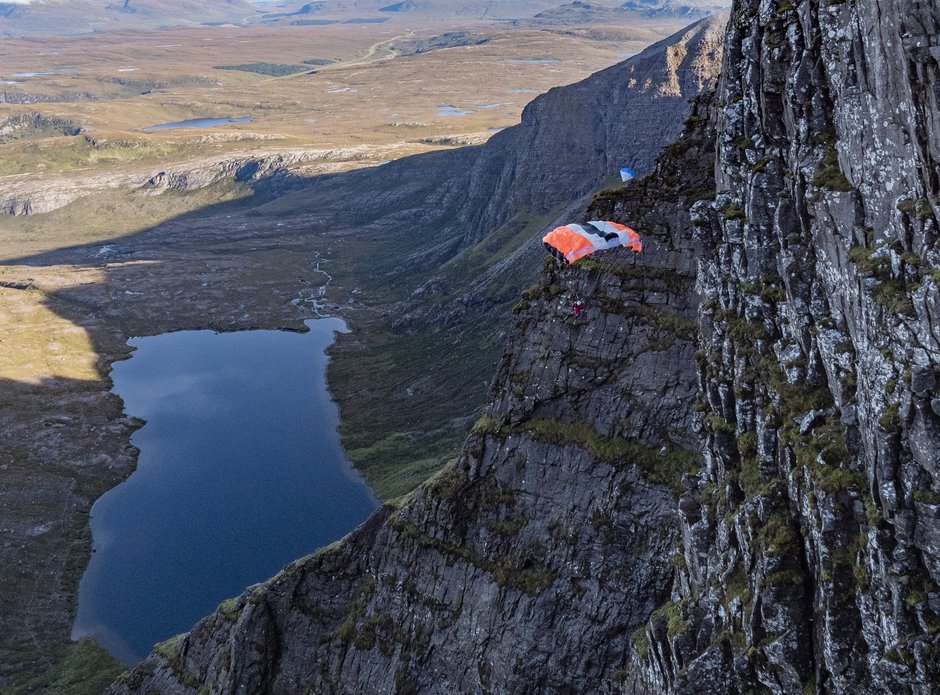 Image by: Sam Percival
Image by: Sam Percival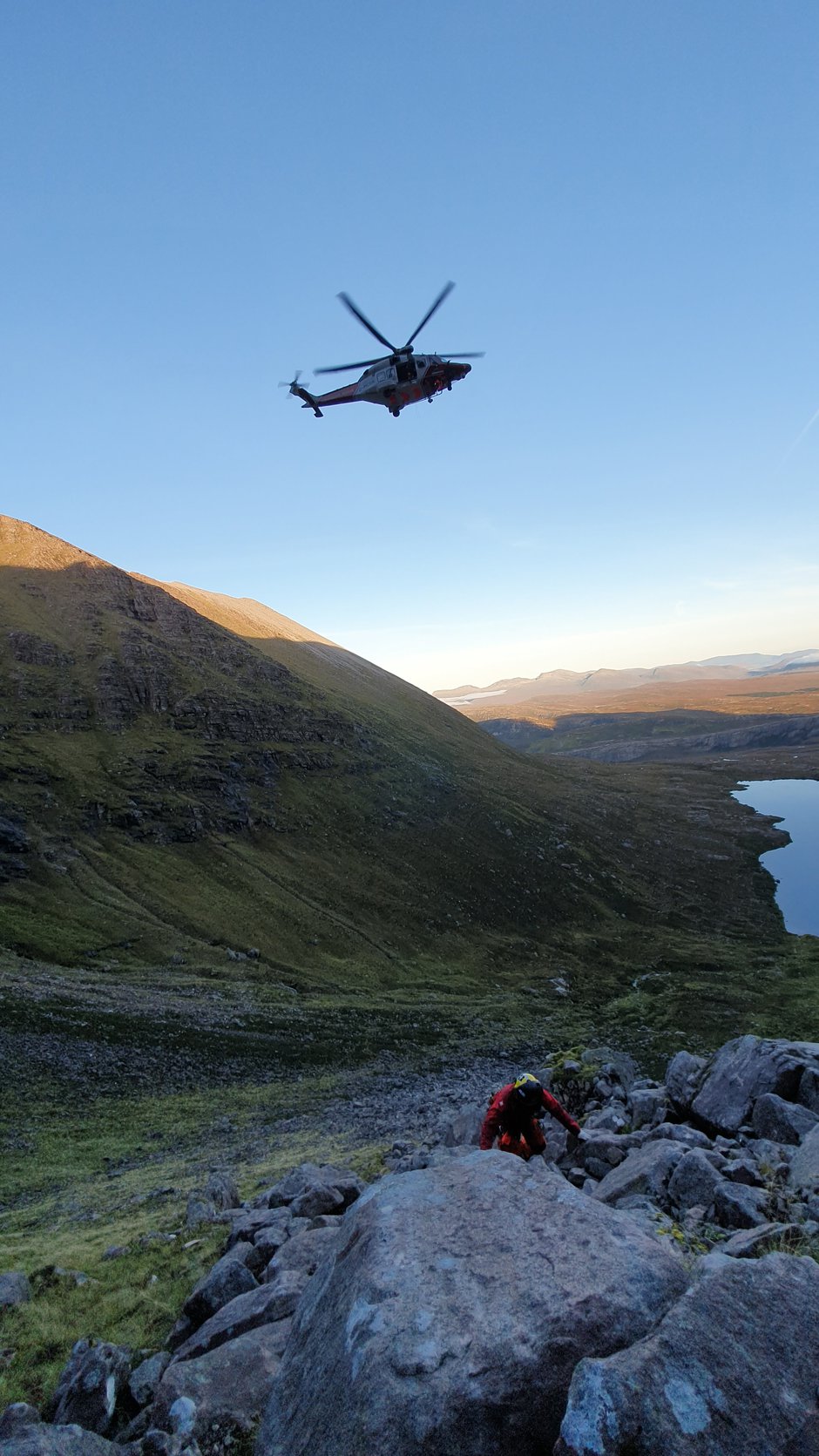 Image by: Sam Percival
Image by: Sam Percival
Britain's oldest female kickboxer nicknamed 'The Beast' training for first fight aged 76
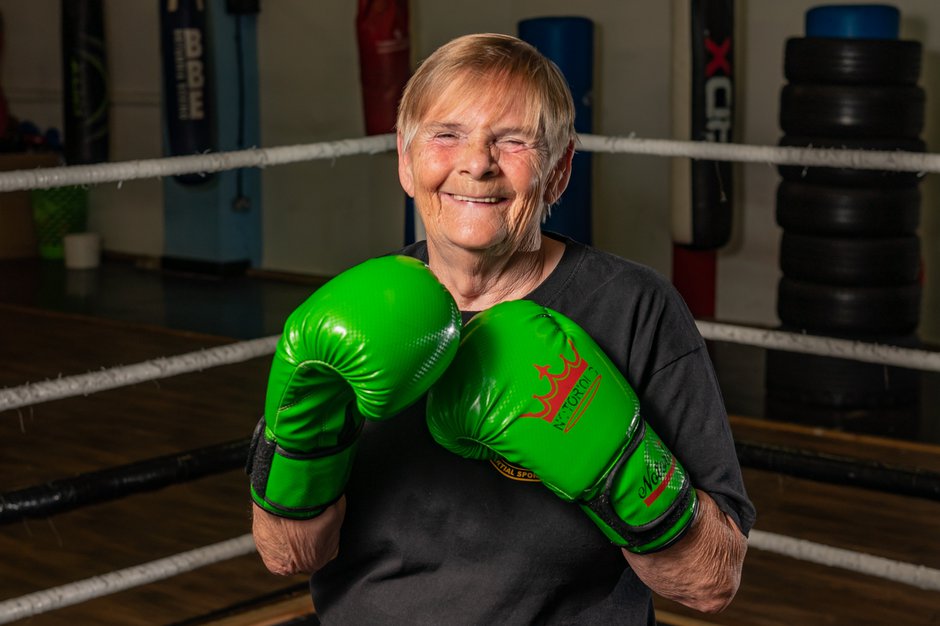 Image by: Adam Hughes SWNS
Image by: Adam Hughes SWNS 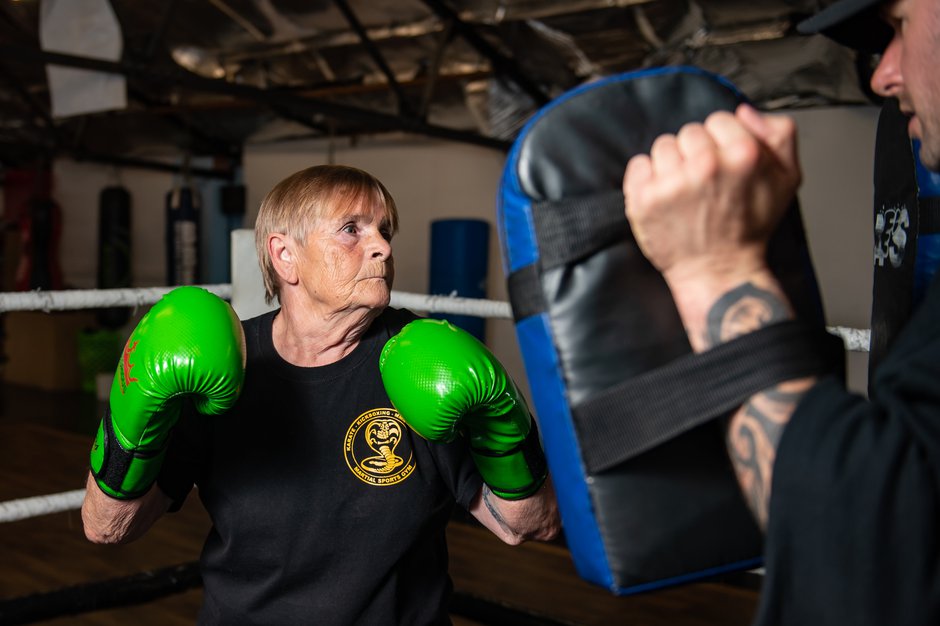 Image by: Adam Hughes SWNS
Image by: Adam Hughes SWNS 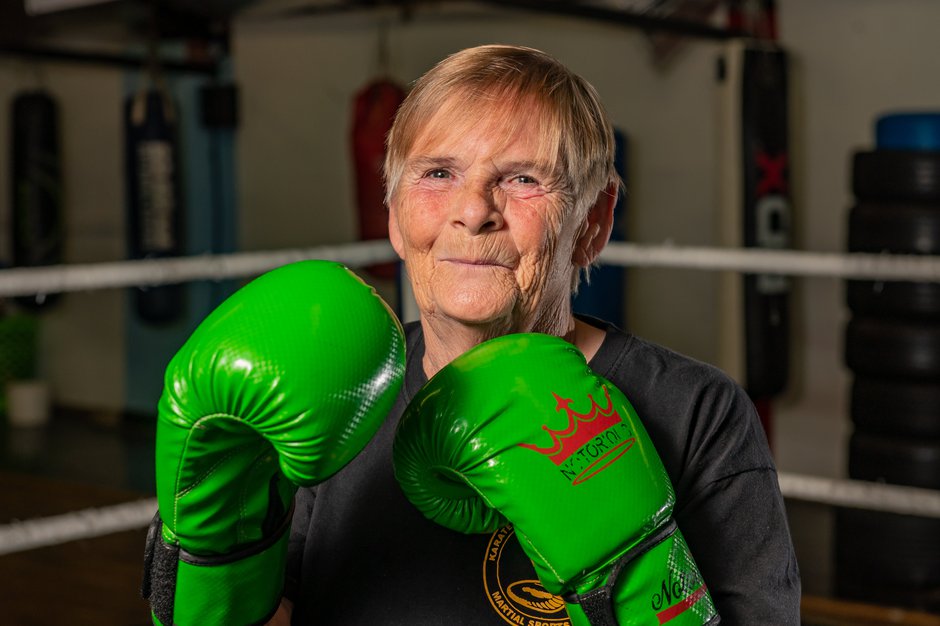 Image by: Adam Hughes SWNS
Image by: Adam Hughes SWNS
Britain’s oldest female kickboxer nicknamed "The Beast" is training for her first official fight – AGED 76.
Jean McKenzie Baldwin has had two knee replacements and suffers from arthritis but
her coach says she goes into “beast mode” in the ring.
The Scots-born gran is now preparing for her first bout when she takes on a woman 16 years her junior in a charity match next month.
She said: “I can’t explain how good it makes you feel. It’s so invigorating.
“Even though I’m full of arthritis I feel absolutely great.”
Jean, from Smisby, Derbys., took up the sport in a bid to combat her grief after her husband Peter died in 2013 aged 76.
She said: “When I lost Peter I didn’t want to speak to anybody, I didn’t want to do anything.
“It took me quite a few years to get my confidence back.
“My son suggested I take up a sport and I went along to a gym nearby and saw these people kickboxing and I just thought ‘why not give it a try’.”
Jean, who has three grandchildren, now works out three to four times a week at a kickboxing gym in nearby Swadlincote, Derbys.
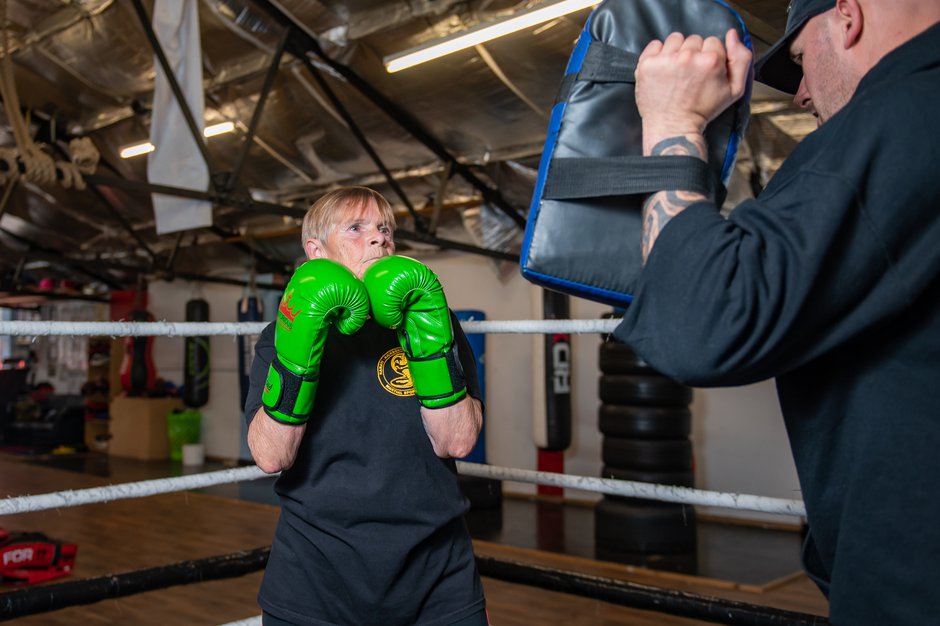 Image by: Adam Hughes SWNS
Image by: Adam Hughes SWNS
She added: “My husband was one in a million and would certainly have approved of me getting in the ring. I would have said: ‘Good on you, girl. Go for it’.
“The grieving never really stops, but you’ve just to get out there. Stop sitting in the house all day long.
“Even though you have got all the wrinkles and grey hair, you will feel 20 years younger when I’m in the ring. I'm called The Beast which I think is hilarious.
“I’ve got my first bout coming up, it’s just for charity but I’m taking it very seriously.
“I’m going to go up against a woman in her 60s and I’m determined that I’m going to be the one that’s going to come out of it.
“It’s about speed and accuracy and watching out for your opponent’s weaknesses while defending yourself from kicks.
“I become totally focused in the ring and I just give it my all. It’s a wonderful feeling.
“I get my energy from willpower and more than anything pride.”
Her coach, Jamie Fearn, who co-owns Martial Sports Gym, said: “I say she goes into ‘Beast Mode’ She's so nice, but she does not stop.
“If I say to her, ‘don’t do this it’s too hard for you’ she’ll say ‘no, I’m going to do it’
Jean McKenzie Baldwin will be 77 when she fights her first competitive match early next year.
Her coach Jamie Kearn said: "I am a qualified referee so the match will be official but it will be more like an upscaled sparring match at the gym.
"As far as I am aware Jean is the oldest kickboxer training in the country and she will 77 by the time she steps into the ring."
Video by: Gabriella Petty
ASLEEP AT THE WHEEL - Video captures motorist dozing at the wheel of a 'self-driving' Tesla moving on a busy California highway
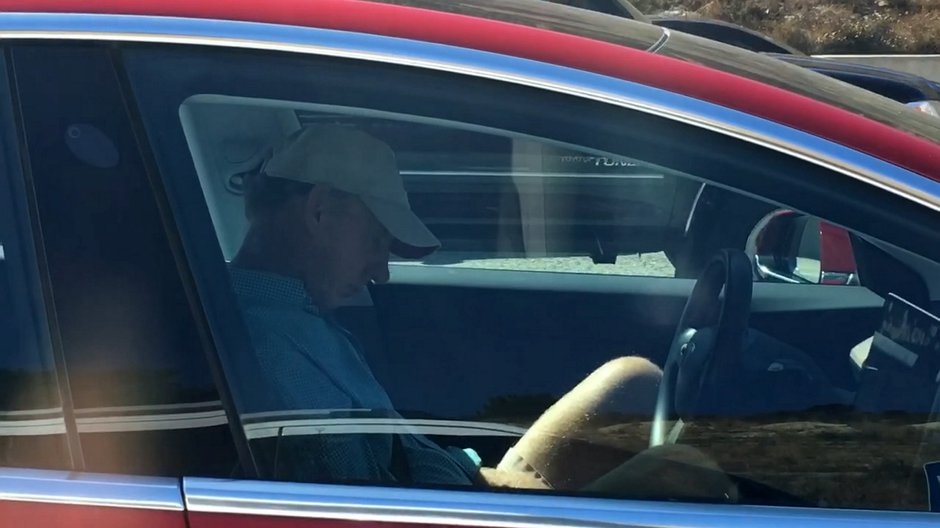 Image by: Video Contributor24
Image by: Video Contributor24
This shocking video shows a motorist who appears to be FAST ASLEEP at the wheel of a 'self-driving' Tesla while moving on a busy interstate in California.
The footage was shot from a passing car travelling at around 35mph on Interstate 5 near San Diego on Saturday afternoon [Sept 21, 2019].
Tesla’s autopilot function is capable of keeping a car in lane and changing lanes but users are advised to monitor the system and keep their hands on the wheel at all times.
A passing motorist, who was travelling with his wife and children, said: “He was totally out - none of us could believe it.
“My wife was screaming 'call 911', she was really worried. We called 911 a bit further down the road and they said they’d come and investigate.
“This is the issue with self-driving technology, it allows people to relax so much on the freeway that they fall asleep.
“We were going about 35 or 40 miles per hour when we saw him. The traffic had just started slowing down, there were cars pulling around him and changing lanes. But his car stayed in the same lane while we were next to him.
“I have never seen someone asleep at the wheel like that before, this is a real safety issue that we need to consider for the future. It’s a sign of our times.
“He was driving a Tesla, one of those new electric, full self-driving ones, I think it was a Model 3.”
The Tesla company, fronted by CEO Elon Musk, has come under fire for purportedly overselling the capabilities of its self-driving vehicles.
Robert Sumwalt, chairman of the National Transportation Safety Board (NTSB) told NBC News earlier this month: “Drivers are believing that the cars are autonomous, there are no fully autonomous vehicles that are on the market today.”
A Forbes article published last month [August 25, 2019] suggested that Tesla is a long way from creating a fully autonomous car, noting that the current models only “consist of semi-autonomous capabilities.”
There was a fatal Tesla crash in 2018 in California and another last month in Florida, which are still under investigation by the NTSB.
Media reps at Tesla did not respond to a request for comment.
Video by: Gabriella Petty
WHAT A MESS - Mum films her shock discovery of her triplet toddlers who got their hands on a tub of Sudocrem
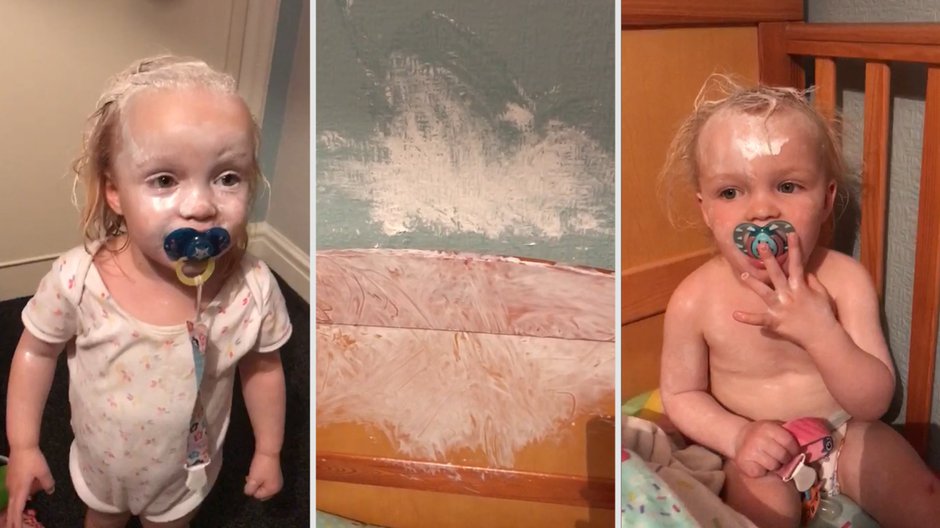 Image by: Lyndsey Palmer
Image by: Lyndsey Palmer
This is the moment a mum discovered her adorable triplet toddlers had decided to decorate themselves and their bedroom -- with a massive tub of nappy rash cream.
Lyndsey Birrell Palmer, 35, thought two-year-olds Indi, Ella and Lexi were having a nap until she heard them moving around in their room.
But teacher Lyndsey was shocked when she opened their bedroom door and found they had got their little hands on a tub of Sudocrem.
The cheeky trio had smeared it all over themselves - paying special attention to their hair - and also their bedroom furniture and walls.
Lyndsey couldn't help but laugh and called her wife Lesley, 34, in to witness the carnage and took a funny video of the carnage on the 22nd of September.
The mum from King's Park, Glasgow, said: "The girls were napping for about an hour, and then I heard them moving about the room, which wasn't unusual as they normally do this when they woke up.
"I said to my wife that I would go upstairs and bring them down to the living room now that they were awake.
"As I entered the room, the first thing that I thought was 'that's a funny smell' and as you can imagine, it's not always a nice smell with triplets at this age.
"I popped the light on to see Lexi with a huge grin on her face and white Sudocrem all over her.
"It was only then that I saw the full extent of the drama, and my first thought was 'oh my God, it's EVERYWHERE!'
"I quickly shouted to my wife to bring my phone and come see, and we both burst into laughter.
 Image by: Lyndsey Palmer
Image by: Lyndsey Palmer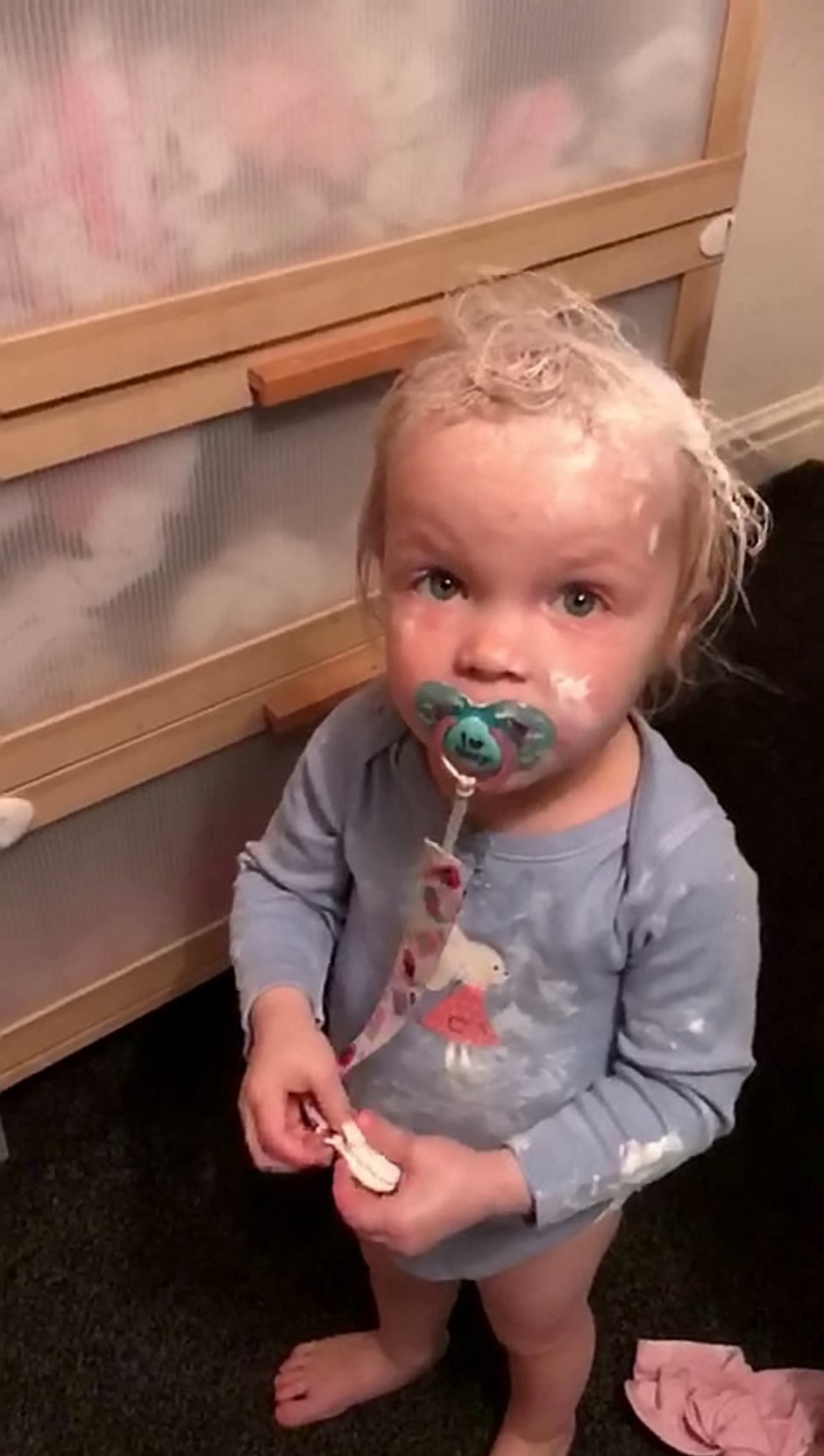 Image by: Lyndsey Palmer
Image by: Lyndsey Palmer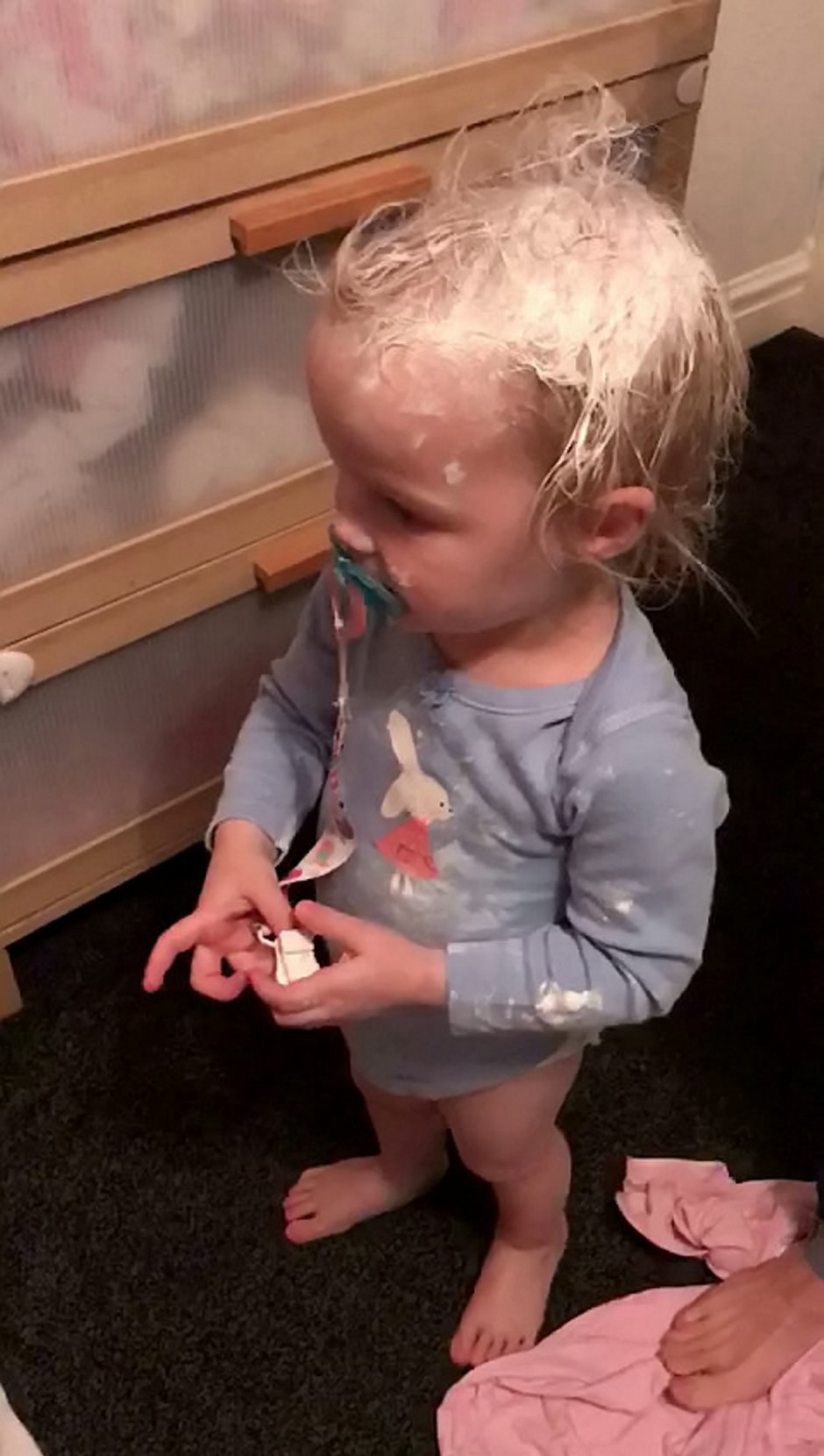 Image by: Lyndsey Palmer
Image by: Lyndsey Palmer Image by: Lyndsey Palmer
Image by: Lyndsey Palmer
Looking after the triplets as well was their son Lewie, four, Lyndsey and Lesley are no strangers to mischievous children.
The two teachers met in 2005 on a night out in Glasgow and tied the knot in 2012 before welcoming son Lewie in 2015 and the triplets in 2017.
The married pair always find the funny side to their children's cheeky actions.
Lyndsey said: "The girls are always being cheeky - triplets are a handful, especially at the age they are now!
"They're always putting their pants on over their trousers, and taking their shoes and socks off in the car.
"I have to spend time at the end of every car journey putting them all back on because when one does it, then all of them have to do it!
"They've opened their drawers and pulled all of their clothes out onto the floor so many times that we have now had to duct tape them shut.
"With the Sudocrem incident, the girls are still a bit too young to realise what happened, and Lesley and I were just stood laughing at the mess.
"If they got their hands on another tub, I could guarantee the same thing would happen again!"
 Image by: Lyndsey PalmerVideo by: Gabriella Petty
Image by: Lyndsey PalmerVideo by: Gabriella Petty
ROCK-HARD CLIMBER - British army hero becomes the first unaided double above the knee amputee to reach the top of Mount Kilimanjaro
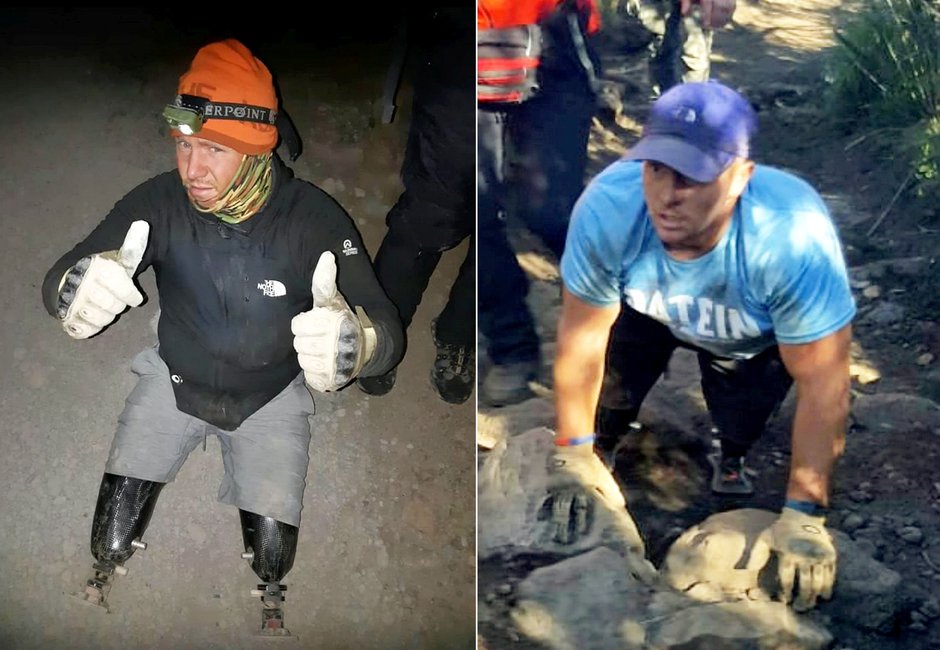 Image by: James Rose
Image by: James Rose
A British Army hero has become the first unaided double above the knee amputee to reach the top of Mount Kilimanjaro.
Private James Rose, 32, lost both legs to an undetected riverside IED during a foot patrol in Afghanistan in 2009.
Suffering with PTSD, the injured vet threw himself into competitive sports like volleyball and wheelchair basketball, even winning Invictus Games medals.
James swapped his wheelchair for 'stubbies' - very short prosthetics for above-the-knee amputees - and trained for six months this year.
Former 2 YORKS soldier James climbed for up to 15 hours-a-day on his hands and 'stubbies' for five days to reach the summit of the 19,341ft mountain, earlier this month.
Married James, from Middlesbrough, north Yorks., said: "The entire time, I was basically on my hands and knees crawling.
"I would be crawling up different parts of Kilimanjaro for around 12 hours a day, eating things like pasta and rice throughout the day.
"The first four days were regular hours - from around eight until eight.
"But the last day was the hardest because the terrain on the final ascent was mostly gravel - so the earth was slipping away from under me.
"A couple of time, I really didn't think that I'd make it. But I got my head down, had a good team around me, and got on with it.
"Something clicks inside you when you feel nearly defeated, and I'm relieved that I had the strength to keep going."
James stepped on an undetected explosive in Gereshk in Helmand province, Afghanistan, in November 2009.
His right leg was torn off instantly, and - though doctors tried to save his left leg - he had two double above-the-knee amputations.
James was medically discharged from the Army in April 2014, and married wife Naiomi [corr] and became a first-time father.
Last year he competed at the Invictus Games in Australia, winning silver and bronze medals in sitting volleyball and wheelchair basketball.
James then set his sights on the 19,341 ft high Kilimanjaro last November, after watching TV show Extreme Everest with Ant Middleton.
Posting to Facebook about being inspired by the programme, best pal Darren Young replied to say - "Hey, why don't we climb Kilimanjaro?"
James said: "At first, I wasn't really sure if he was serious or not. But after he'd planned the route for a couple of months, I thought about it more.
"I decided that climbing Kilimanjaro would be a great way of encouraging others suffering with mental health problems to come out of their shell.
"Last year, I competed at the Invictus Games in wheelchair basketball and sitting volleyball - and won medals for them.
"After my experience overseas, I'd spent several years rehabilitating, and one way of doing that was throwing myself into sports.
"So the jump from all that to mountain climbing wasn't actually too drastic."
He did two hours of cardio and weight for around five days-a-week between January and July - and used an altitude generator for five hours-a-day at home.
James climbed in the Lake District with Darren for practice, crawling up Helvellyn (3,117 ft).
They set off for Tanzania on September 8, and began their five-day trek across - and up - Africa's highest mountain range on two days later.
Enduring highs of 30°C during the day and lows of -10°C at night, blistering winds and monkeys en route.
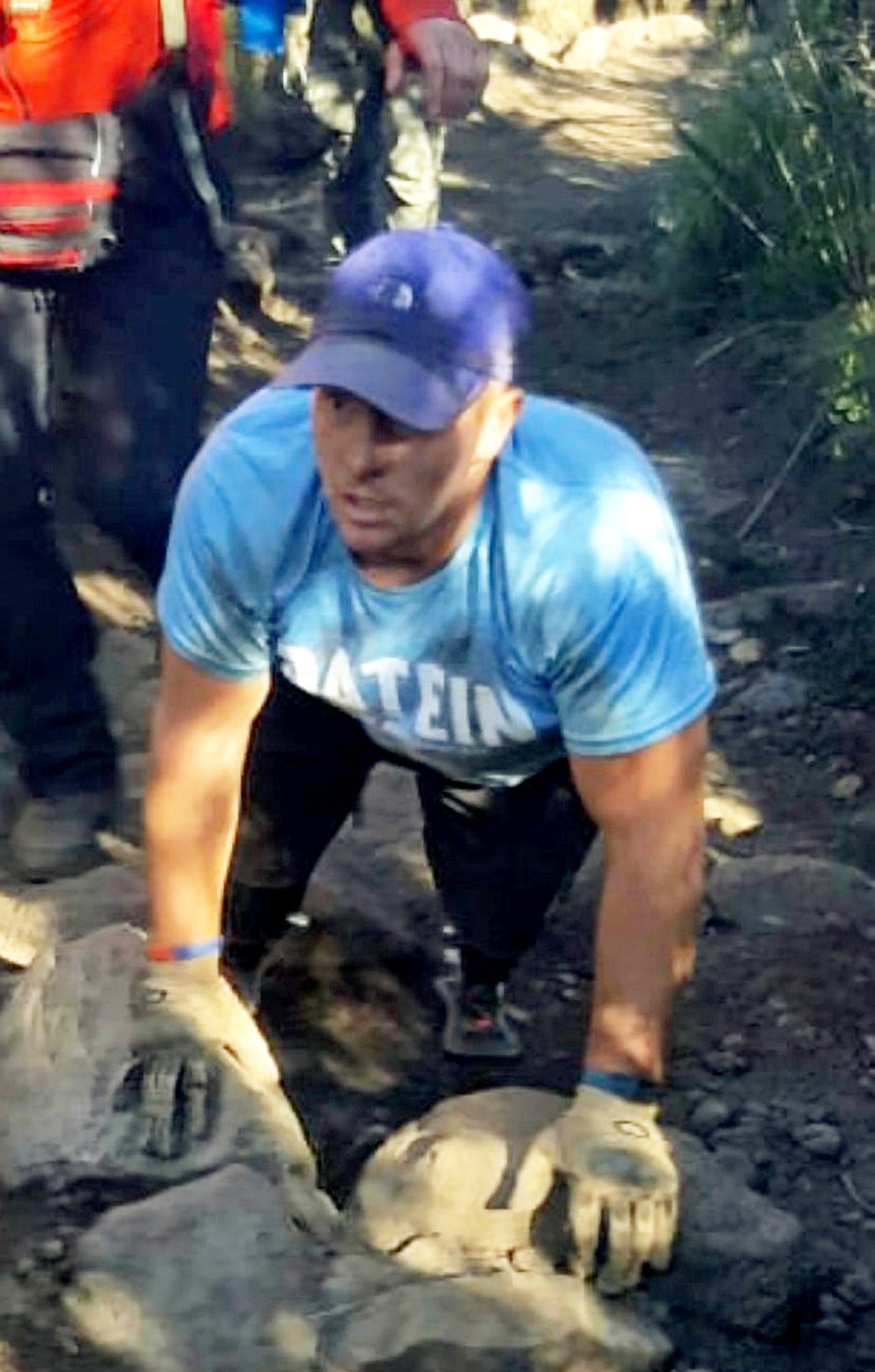 Image by: James Rose
Image by: James Rose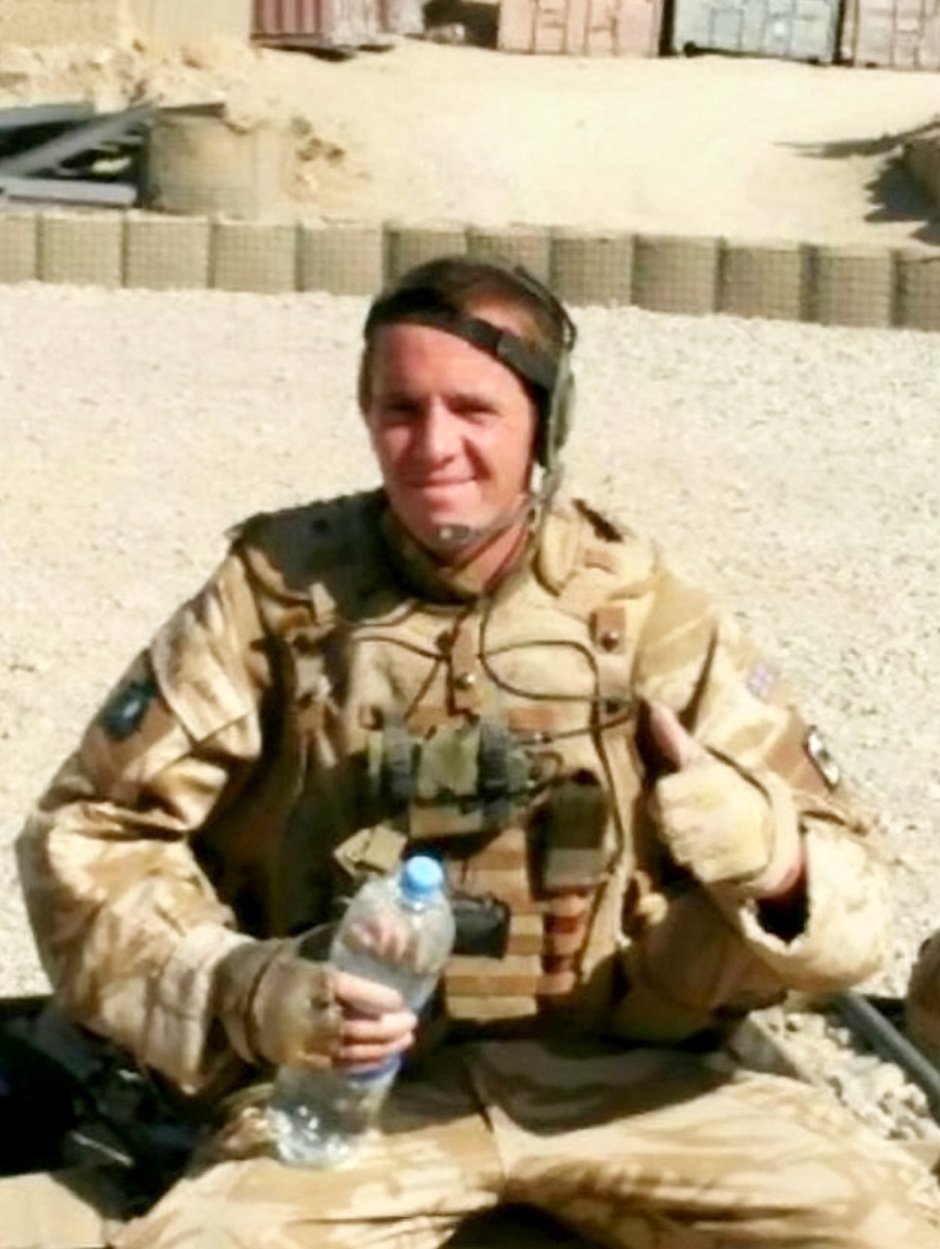 Image by: James Rose
Image by: James Rose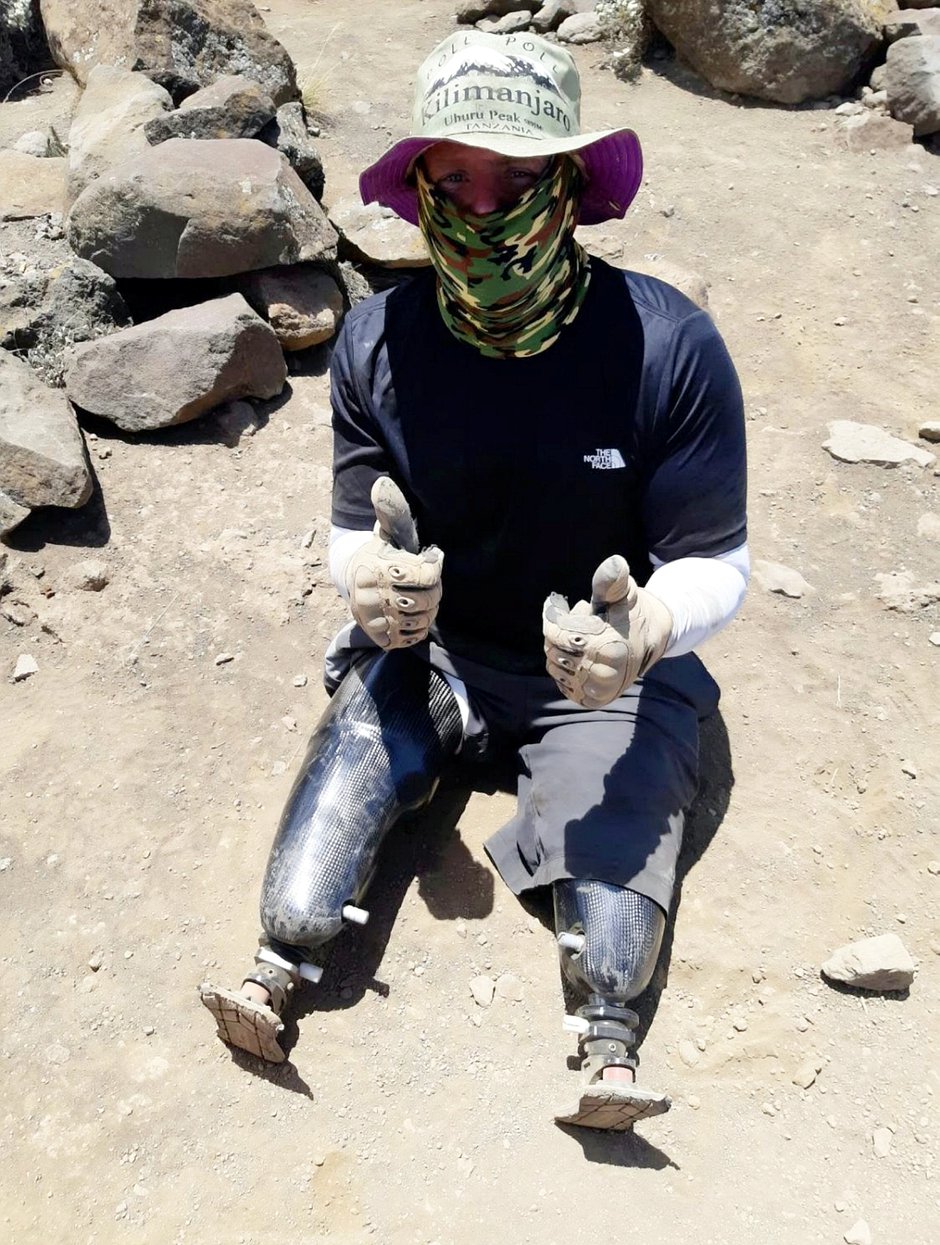 Image by: James Rose
Image by: James Rose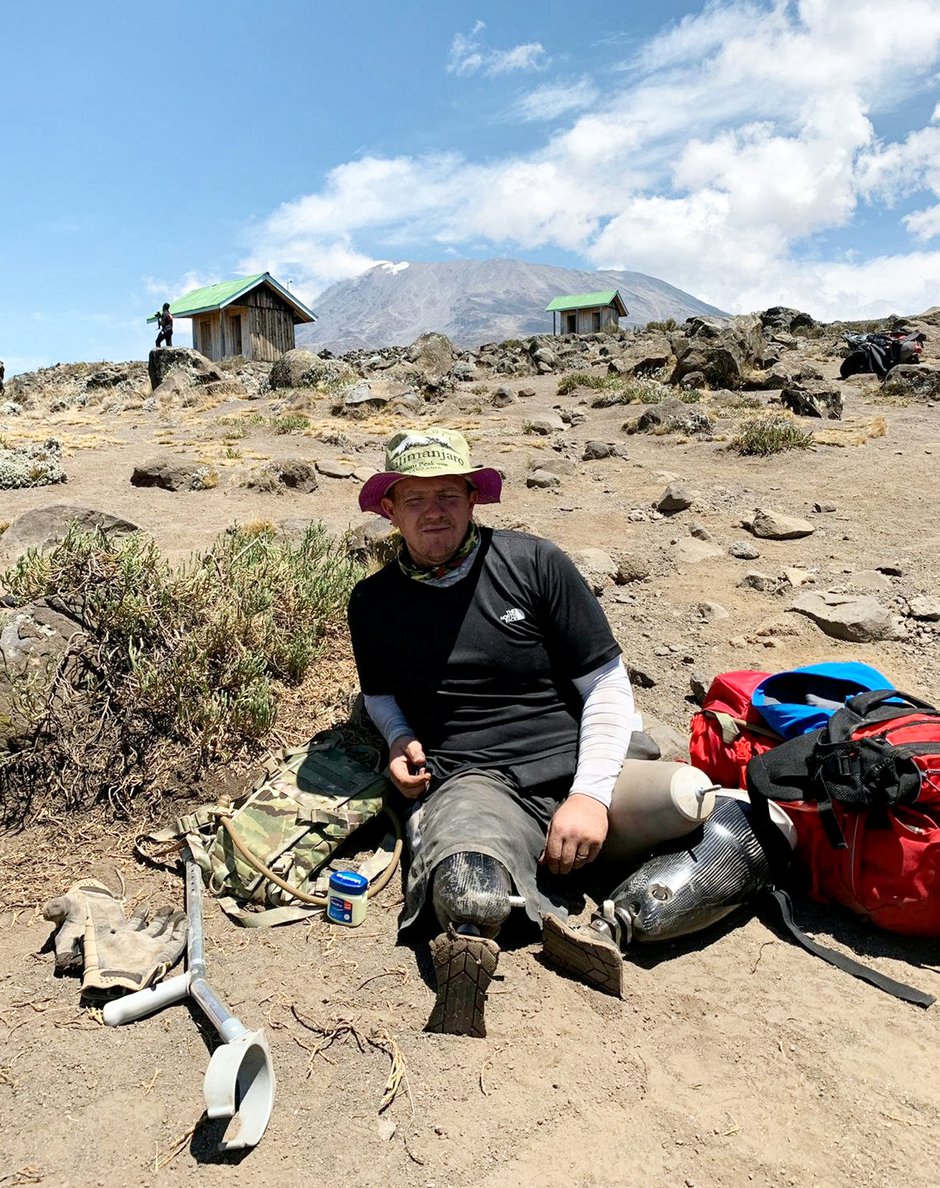 Image by: James Rose
Image by: James Rose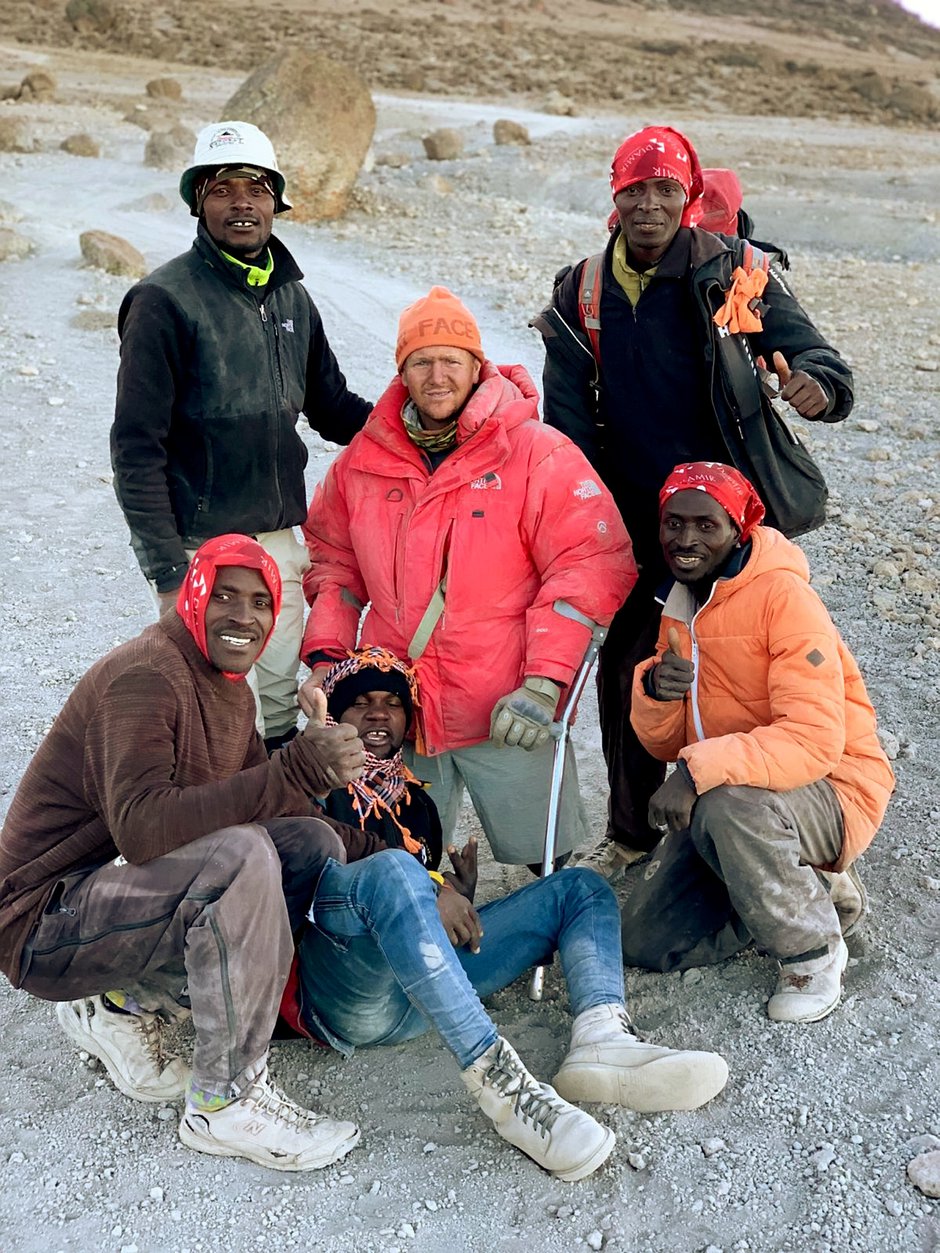 Image by: James Rose
Image by: James Rose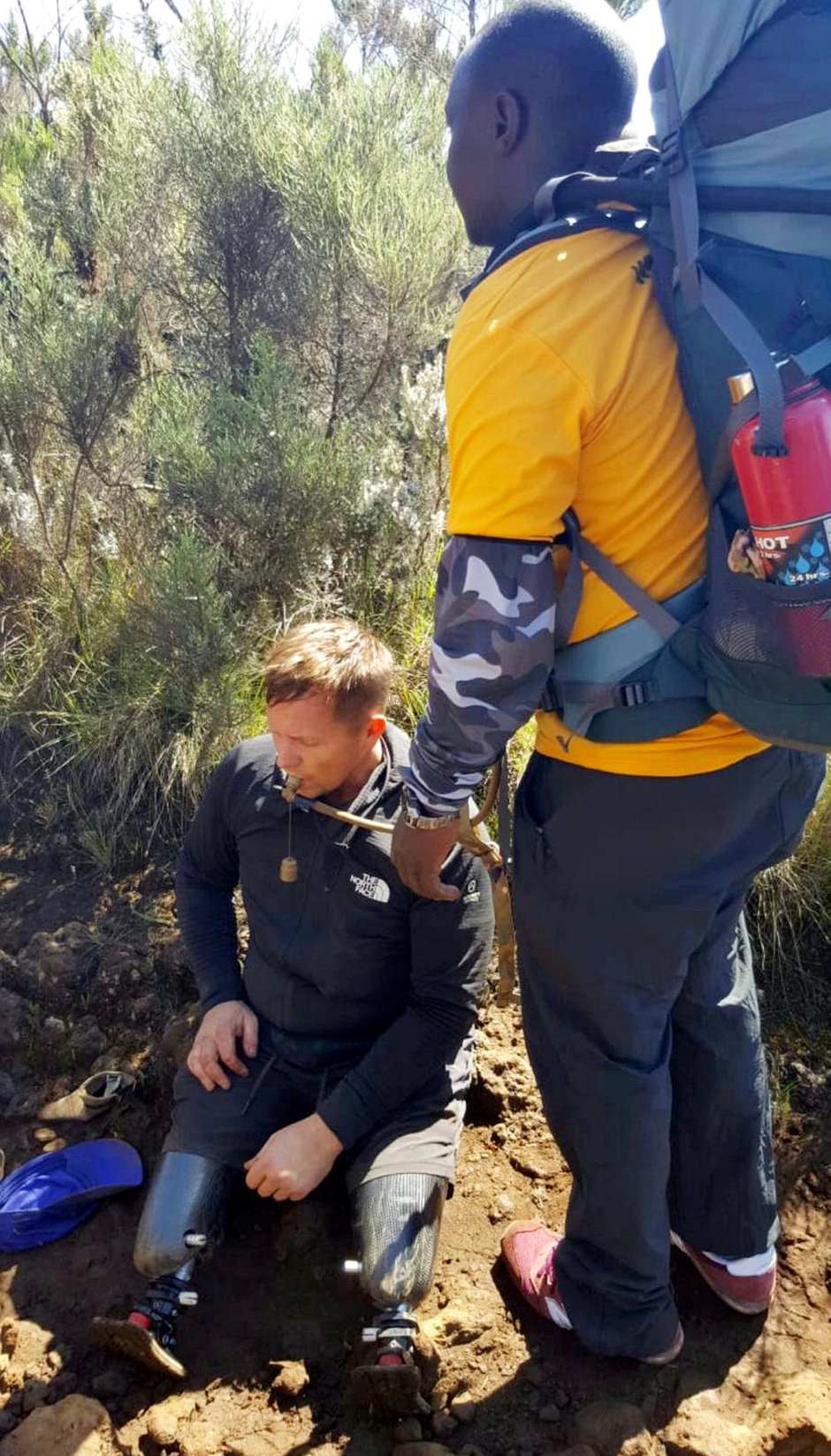 Image by: James Rose
Image by: James Rose
James trekked along the ancient Marangu route, which crosses The Saddle, a three-mile wide, high-altitude, semi-desert that separates craggy Mawenzi from the main summit Kibo.
From the summit, glaciers, screes, cliffs, afro-alpine moorland, and forests lead down to the cultivated foothills.
Accompanied by five mountain guides, he fed off a strictly high-protein, high-carb diet - mostly pasta, rice, and chicken, he said.
On the final ascent to Gilman's Point on Saturday September 14 James climbed for 15 hours an astonishing 3,000ft.
From the top, James described the panoramic view as "one of the most awe-inspiring sights that I've ever seen in my life".
He said: "It looks a little like when you're in an airplane and you're coming in to land - you can see towns and roads ahead.
"Well, it was a bit like that, but more beautiful, and so tranquil.
"The weather conditions on that last day were perfect for getting good pictures. It was clear blue sky, so we could see for miles around.
"The hardest day, by far, was the last day. We set off at around two in the morning, and climbed for about 15 hours almost non-stop.
"I stopped twice on that last part, and didn't think I'd get through it.
"I openly talked of giving up, and climbing back down - or letting the guys from my team aiding me, basically carry me.
"But I didn't want that to happen. I'd set myself the goal of becoming the first double above-the-knee amputee to climb Kilimanjaro unaided.
"And I'm so glad I persevered - because otherwise I'd have sunk into a dark hole."
James' ambitions are high - and plans to scale Mt Everest in the near future.
Video by: Gabriella Petty
MOULD DEATH - A 14-year-old died after she caught a one-in-a-million fungal infection - by breathing in mould
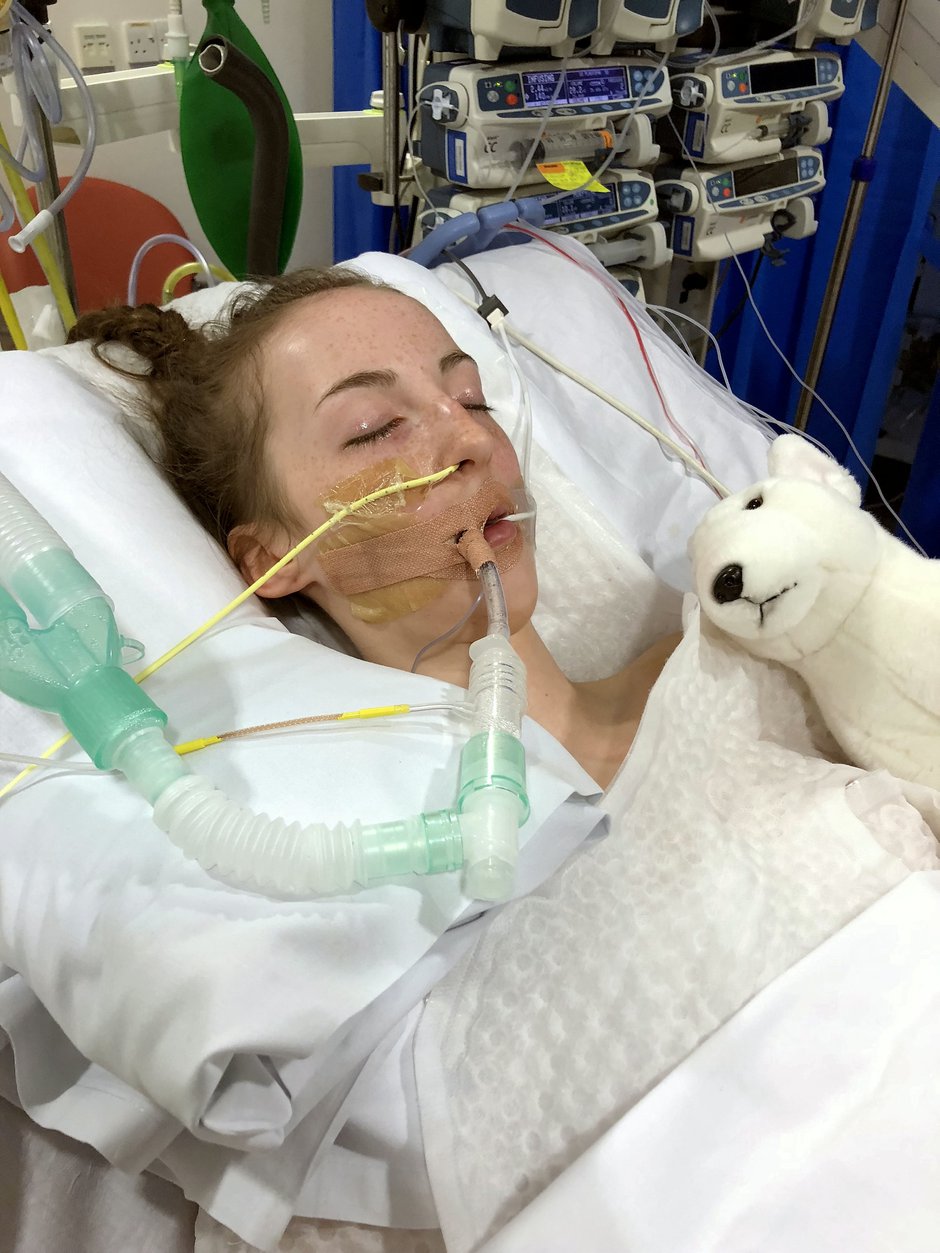 Image by: Louise Owens
Image by: Louise Owens
A 14-year-old died after she caught a one-in-a-million fungal infection - by breathing in mould spores.
Jade Owens was "full of life" just three weeks before a rare fungal infection killed off the inside of her throat, airways and passageways to her lungs.
Keen horse rider Jade was suffering from a suspected chest infection but when it wouldn't shift, medics ordered extra tests.
Initial tests revealed she had Type 1 diabetes and was put in an induced coma to save her life.
She miraculously pulled through, but just as mum Louise thought she was on the mend, Jade began coughing up blood.
Jade passed away just 20 minutes later. Tests later revealed she had mucormycosis - a fungal infection usually caused by breathing in mould spores.
The infection targets people with a weakened immune system and for Jade, led to the tissue and blood vessels in her throat to be killed off when being overrun with fungus.
For reasons unknown, people with Type 1 diabetes are especially at risk of catching mucormycosis.
It is not known where Jade came into contact with the mould spores - but her heartbroken mum suspects it could have been due to her outdoorsy hobbies like horse riding.
Mum-of-two Louise, 35, from Stockport, Greater Manchester, said: “I’m heartbroken. You never think anything like this will happen to you and I want to make sure no one else goes through what we have.
“I think about Jade every single day.
"It’s something I’ll never forget, walking into the room and seeing my daughter covered in blood.
“It was like a murder scene. The blood vessels in her throat had burst and she bled to death.
“She choked on her own blood and had coughed it up. It was horrific to see and that will never leave me.
“The infection is opportunistic. Jade caught it because her immune system was weaker with diabetes.
“We had no idea she even had diabetes. No one else in the family has it so we had no idea what to look out for.
“If only we knew about the signs then we could have done something. I feel guilty in some ways for that."
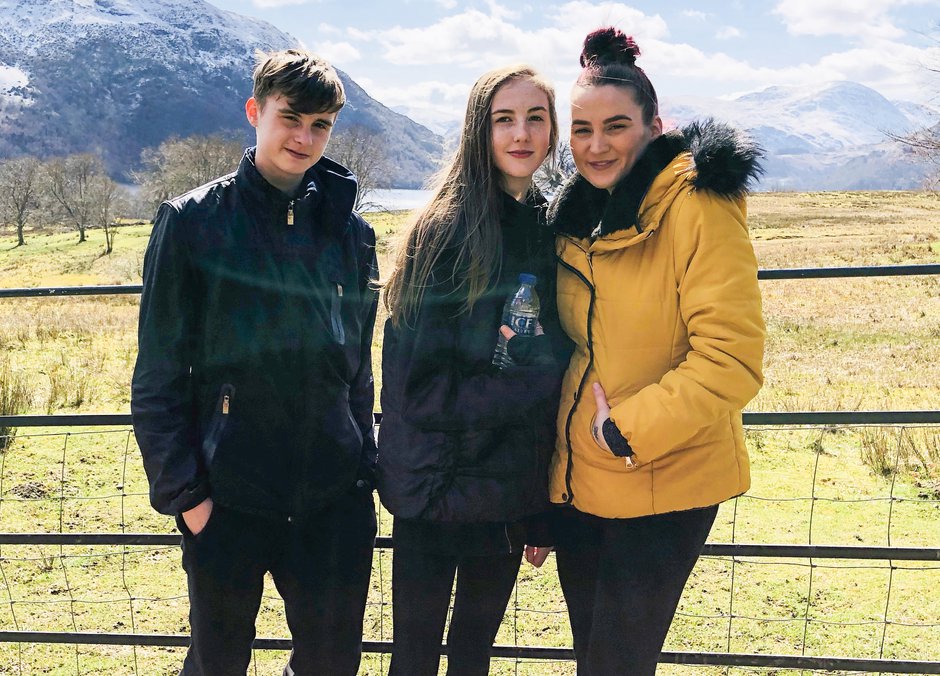 Image by: Louise Owens
Image by: Louise Owens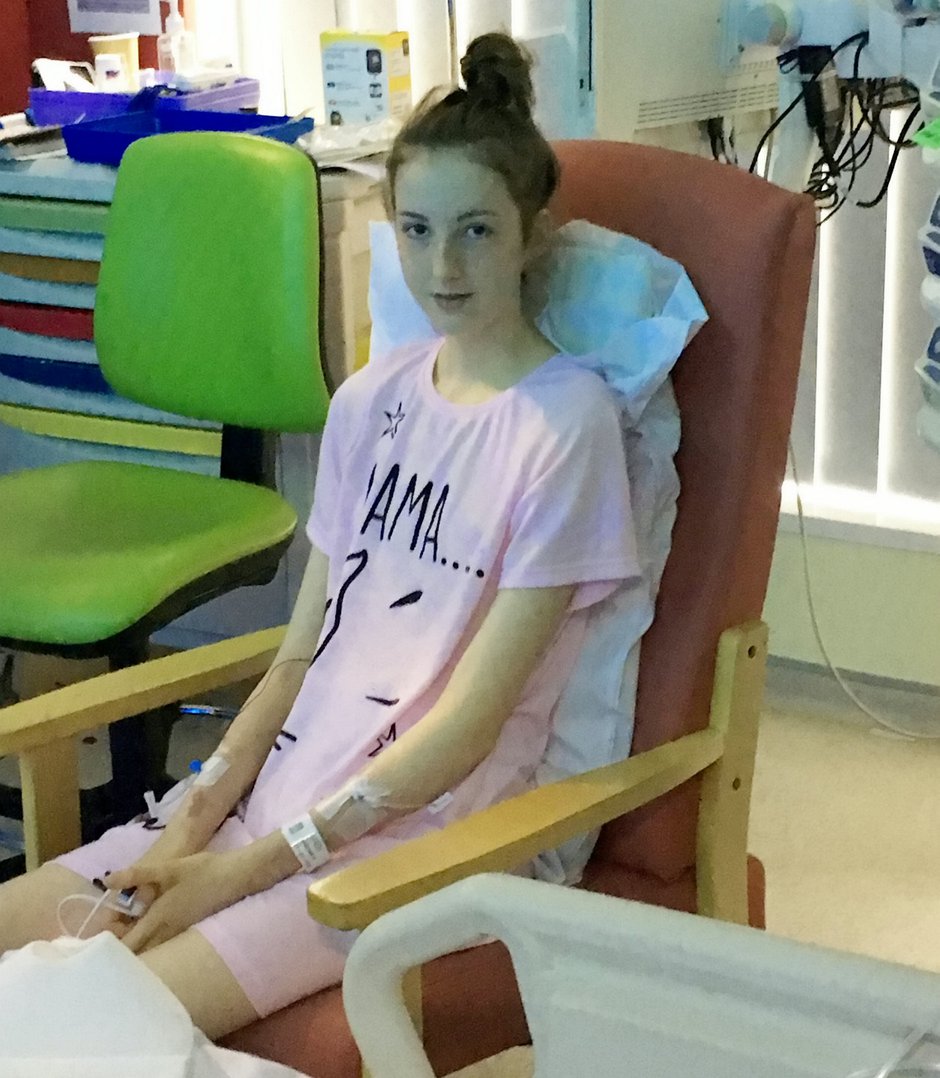 Image by: Louise Owens
Image by: Louise Owens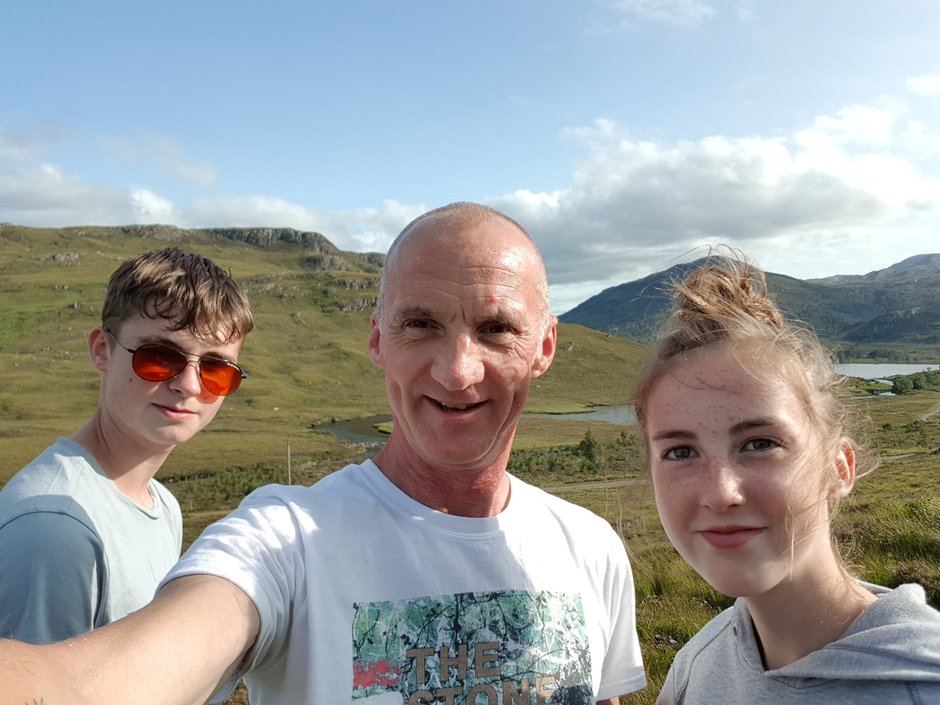 Image by: Louise Owens
Image by: Louise Owens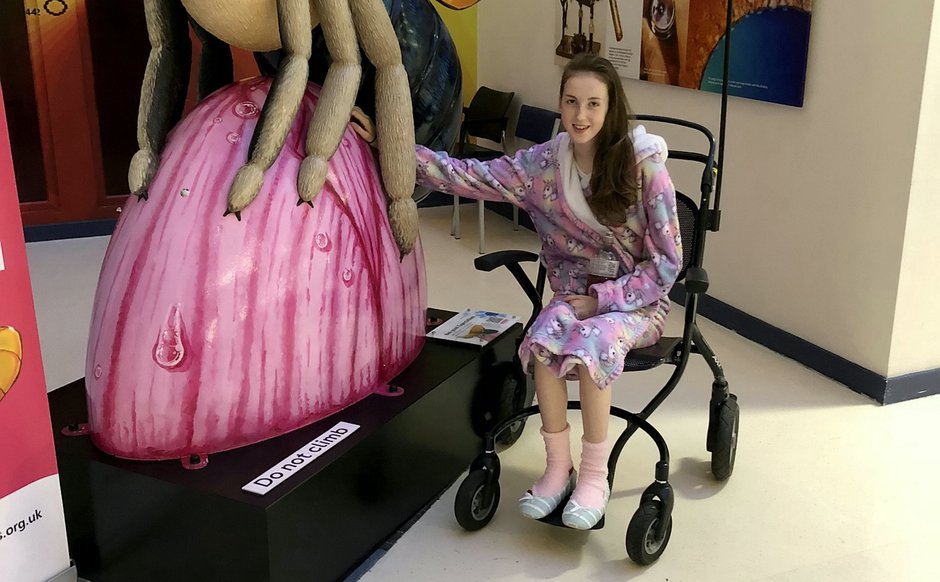 Image by: Louise Owens
Image by: Louise Owens Image by: Louise Owens
Image by: Louise Owens
Jade, the eldest of two children, took ill unexpectedly on May 20 this year.
Up to then she had been her happy, normal self, who enjoyed riding horses and spending time enjoying the outdoors with her family.
Jade had been focused on spending quality time with her family following the tragic death of her dad Paul Daniels, in 2016, whose relationship with mum Louise ended in 2007.
She started to complain about having a headache and flu-like symptoms and booked in to see her GP.
Jade, sister to Aiden, 17 and half-sister to Abley Stock, aged one, was prescribed a course of antibiotics as her doctor feared she was suffering with a minor chest infection.
But the next day, on May 21, her grandmother Charleen Owens, a nurse, suggested Jade goes to A&E after displaying rapid breathing and appearing discoloured.
Beautician Louise took Jade to Stepping Hill Hospital in Stockport and a finger-prick test found she was in severe DKA - Diabetic ketoacidosis.
DKA is a serious complication of diabetes that occurs when the body produces too much ketones, effectively turning blood acidic.
It develops when the body can not produce enough insulin and leads to the breakdown of tissue.
DKA can be triggered by an infection and if left untreated - can be fatal.
Louise, who has a partner, Neil Stocks, 45, said she had no idea her daughter’s shortness of breath and frequent trips to the toilet had anything to do with type one diabetes.
It doesn’t run in the family and there is no known cause for it and Louise explains how she simply didn’t put two and two together when Jade first got poorly.
She said: “Jade looked very poorly and hadn’t been well all week. We went to the doctors and we thought it was just an infection and that was that.
"I had no idea it would turn out to be as serious as it did. I took her to A&E and they said she was in severe DKA. They said a virus can make it worse.
“Her body had stopped producing insulin and her muscles had started to break down.”
Jade was kept in hospital overnight but was transferred to Manchester Children’s Hospital on May 22 after doctors grew concerned at how she responded poorly to being given insulin.
Her condition rapidly decreased to the point where medics were forced to place Jade into an induced coma so doctors could carry out further tests.
Doctors told a terrified Louise her daughter only had a “50/50 chance of survival”.
A further scan discovered Jade had fluid on her lungs and she was given antibiotics, insulin and food via tubes whilst in a coma for five days.
And this seemed to work - when on May 27 Jade woke up - and uttered the words “I’m starving, can I have a McDonald’s"?
Louise said: “We were over the moon. We thought we were getting normal Jade back again and it was an amazing feeling.
“It was such a relief because we were told she was severely poorly and we thought we might lose her. She was moved onto a ward and taken off intensive care.
“It as great, she was up and about, was able to shower herself and everything. At this point we were quite hopeful she might come home soon.”
Louise said Jade was well in herself but still had fluid on her lungs and doctors were planning a procedure to drain the excess.
Jade spent “two good weeks” recovering in hospital, according to Louise, who recalls leaving her daughter in hospital on June 10 in “high spirits”.
But the following morning at 8.05am, Louise said she received a phone call from her mum who was at Jade’s bedside.
“All she said is that something bad is happening. I rushed down there as fast as I could.
“We were ushered into a room and the doctor said she was coughing up blood and they were trying all they could to stabilise her.
“They were working to save her. I didn’t know what to think. I was a mess. Twenty minutes later they came in and told us she had died. It was so sudden and unexpected.”
Louise said the cause of death has already been confirmed as mucormycosis, a fungal infection only found in an average of 1.7 out of every one million people.
People who go into DKA, like Jade, are placed at increase risk of developing the toxic infection that can be extremely difficult to treat if not spotted early enough.
The infection effectively invaded Jade’s immune system and ate away at the inside of her throat, airways and passageways to her lungs.
This caused the tissue to go through necrosis - the premature death of cells in living tissue - leading to the fatal bleed.
A devastated Louise said she’s still struggling to come to terms with her “angel”, and wants to speak out about the symptoms of type one diabetes to help raise awareness to others.
She said: “I miss her every single day, our lives will never be the same without her. To go what we have gone through is horrific. I wouldn’t want anyone else to go through what we have.
“She was very tired and had experienced some weight loss but she was hungry a lot, too.
“Since all this happened we have learned more about diabetes and they are symptoms of it.”
Jade's funeral, which featured a horse-drawn carriage, was held on July 10.
LOST AND HOUND - Dog rescued after women spend 15 WEEKS in park trying to catch her with thermal imaging, night goggles, traps and meatballs
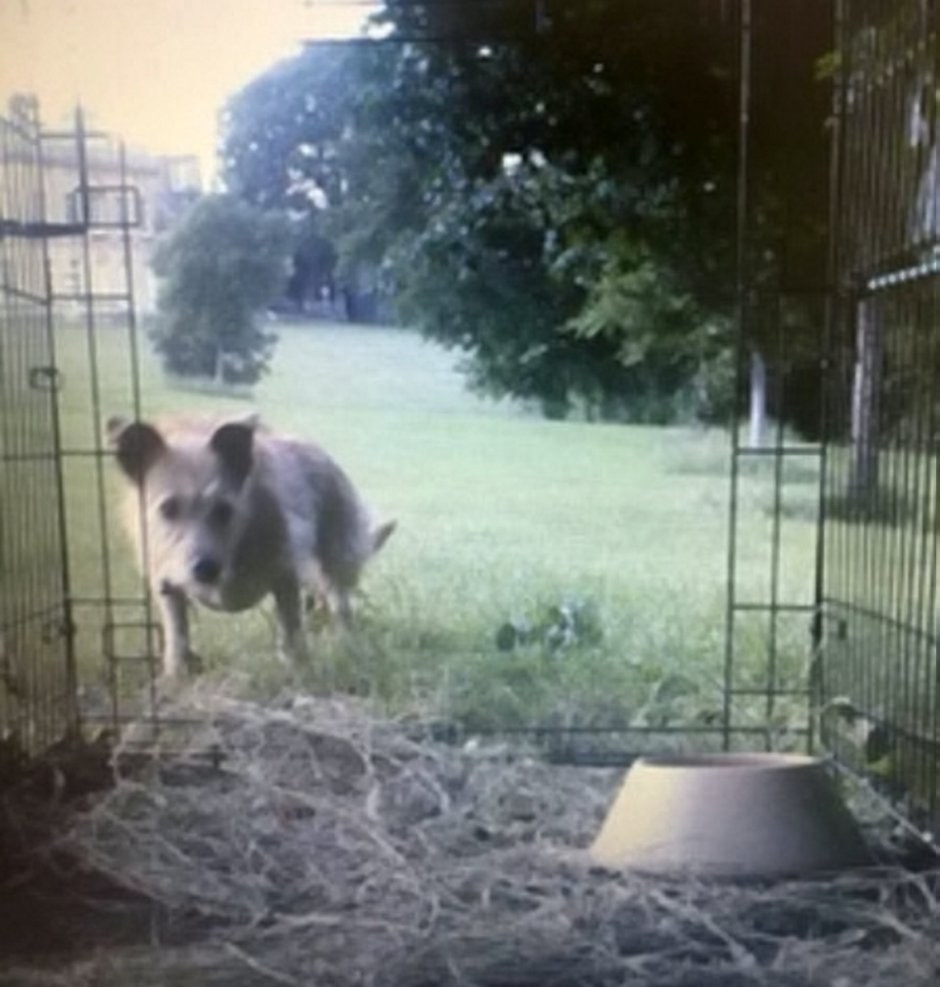 Image by: Shelly Spiller
Image by: Shelly Spiller
A dog on the run has finally been rescued after three women spent 15 WEEKS tracking her down - using spy cameras, night goggles and make-shift trap filled with meatballs.
Shelly Spiller, 32, Amanda James, 42, and Hazel Richards, 52, spent nights camping into the early hours in a desperate bid to find Bosnian rescue dog Zena.
The trio run a Facebook page called Bristol and Somerset Missing Dogs and were notified of the puppy's disappearance back in April.
After bolting through an open door at her new rescue home in Bristol, the terrier-cross wandered around the city before settling in Blaise Castle park.
After several confirmed sightings of the two-year-old pooch, the women distributed posters and set up night patrols in the park armed with meaty treats.
They had to fend off teenagers, drunks and foxes during their night shifts, which sometimes went on until 3am.
When a month passed without success, they started a GoFundMe page to raise £500 to buy a wildlife camera and chipped in a couple of hundred pounds of their own money towards night-vision goggles.
But after nearly four months on the run, Zena was finally captured after being enticed into the cage with a banquet of liver and garlic sausage, butcher's tripe, swedish meatballs and biscuits on Monday evening.
The troublesome pooch is now residing at a local animal rescue centre where she will remain until she is ready to be fostered again.
Shelly said: "I just can't believe we actually managed to catch her. But we wouldn't have stopped until we did.
"Because she is a rescue dog her first instinct was to bolt off. She had only been with her new foster family for two weeks.
"We all work during the day so we'd have our dinner and meet up in the evening.
"We kept getting pictures of her hanging around the River Avon. After a few weeks we were able to pin down a precise area of the park.
"We'd put on a disposable BBQ every night once the park became quiet and would do it around the same time so it would become routine for her.
"When we first started looking it was during the summer so there would be people hanging around the park being loud, which spooked her.
"That happened for a few weeks which was really frustrating. But we still stayed out just in case we spotted her.
"When we told the teenagers to go to the other side of the park we
"We actually had to put a sign down saying 'monitored cage' so we stopped being asked about it.
"The bad weather actually played in our favour as people stopped hanging around.
"The key was being as quiet as possible.
"At the beginning we were out there until 2:30-3am in the morning.
"But once we got the cameras installed we were able to watch the trap from one of our houses, as we live nearby.
"Sometimes we would have to do another late night as the WiFi router would run out.
"We had to keep topping that up every three or four days."
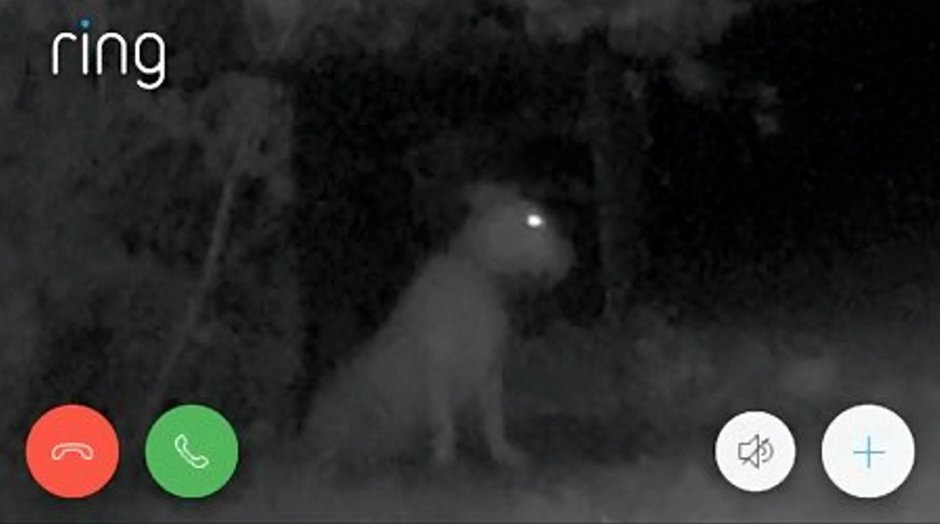 Image by: Shelly Spiller
Image by: Shelly Spiller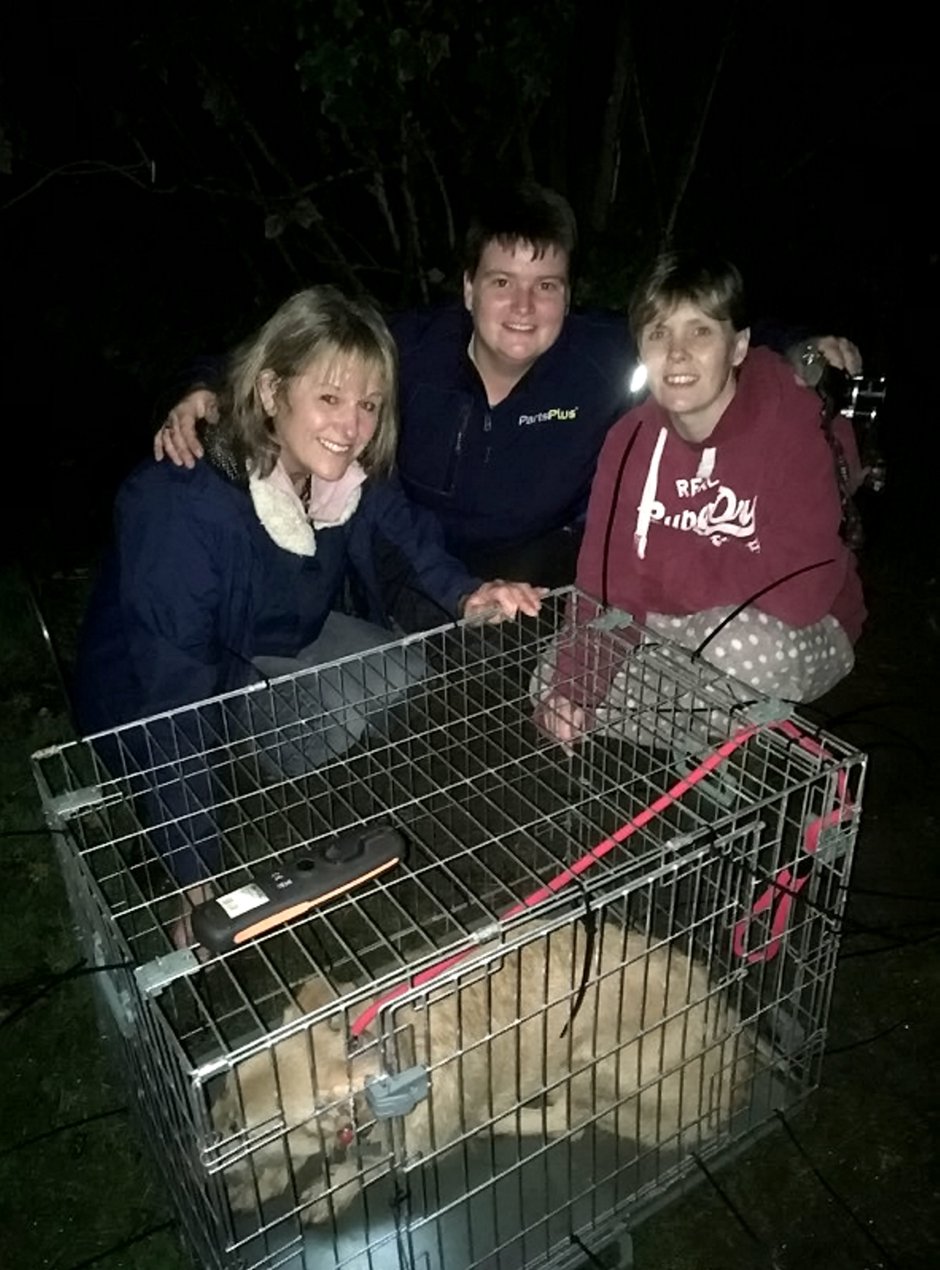 Image by: Shelly Spiller
Image by: Shelly Spiller Image by: Shelly Spiller
Image by: Shelly Spiller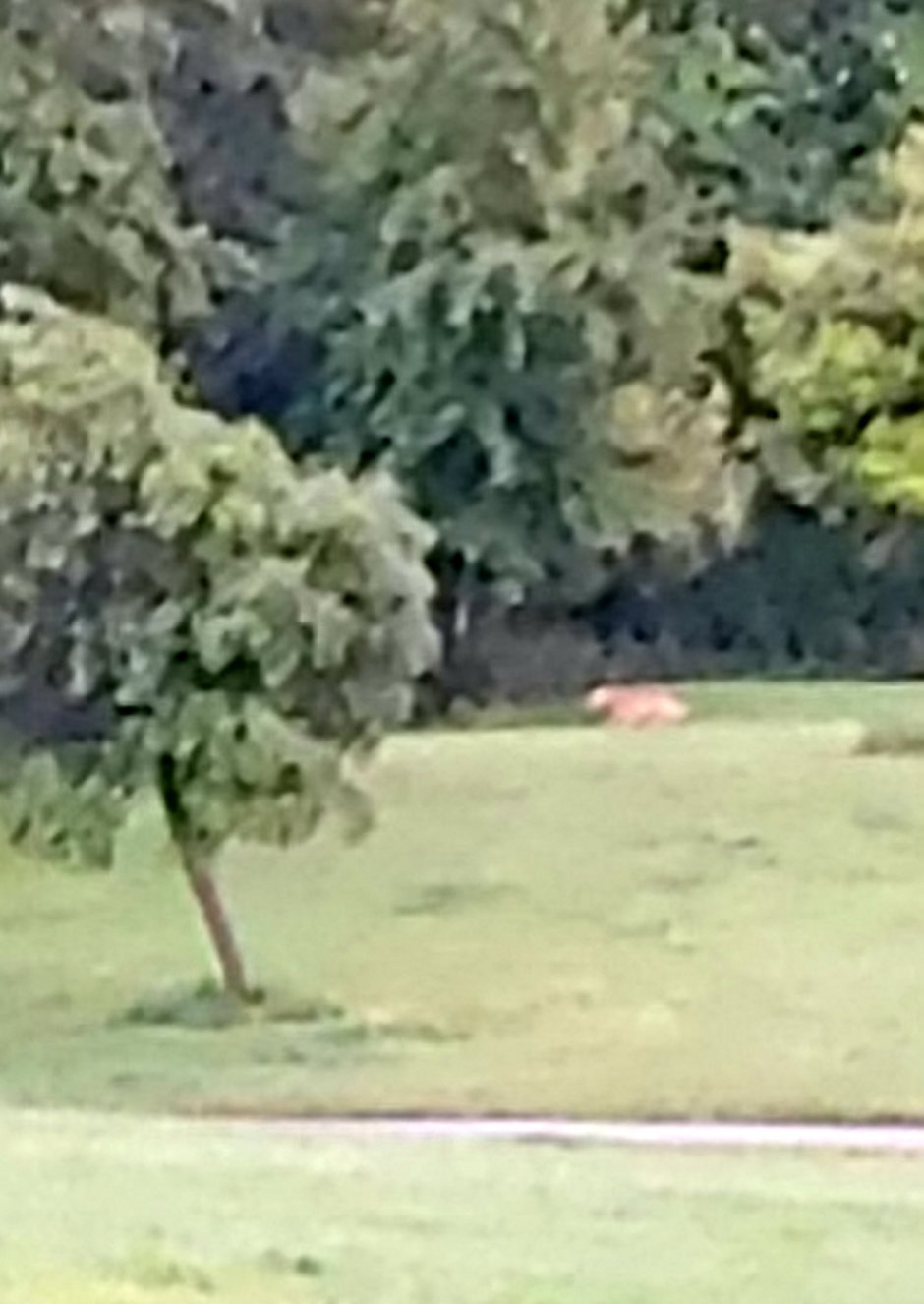 Image by: Shelly Spiller
Image by: Shelly Spiller
They set up the first trap but found it was too small for her to enter.
After testing that out for a couple of weeks, the trio made a longer
Shelly added: "We soon realised she wasn't a fan of things like fish, tuna, mackerel or anything fishy really.
"So we switched it to meats and fresh wet food.
"We didn't buy tinned goods.
"She was living like a fox so that wouldn't have been any good.
"It was quite expensive in the end. We must have spent about £500 which came out of our own pocket.
"But after we changed the food we had to look at changing the traps.
"The first one was too small and she just didn't enter it.
"We got a longer one which she did go in but it would take her forever to get to the back.
"We'd put a trail of food to the bowls but she just never went far back enough.
"That went on for five weeks before we decided to move onto a third one.
"She started weeing against it as a way of marking her territory which was a good sign.
"We would move the bowl an inch or two back everyday so she would go further back into the cage and eventually hit the footplate.
"The aim was for her to press on it which would then release the trap door and trap her in.
"But she's not silly.
"If we moved it back two or three inches she wouldn't go in because she knew it was tampered with.
"It was all about having a lot of patience.
"We were just behind the bushes when she was finally caught.
"It was basically a banquet in there. There was liver sausage, garlic sausage, butcher's tripe, Swedish meatballs, chicken meatballs and biscuits.
"As soon as the door was released we crept over as we didn't know if she was 100 per cent in there."
After successfully catching Zena, the trio carried the cage into a car before reuniting her with foster owner Denise on Monday evening.
The pooch has now returned to a local animal rescue home in the hope of building her confidence before she finds a long-term home.
Shelly said: "She's very nervous around people so it was probably too early for her to be fostered.
"There are going to be people who will say why did you spend months searching for her when she had only been with her foster family for two weeks but I just think animals shouldn't be dismissed.
"She came to England for a better life.
"It was just for the love of animals.
"In our eyes every animal deserves to be warm, fed and comfortable.
"We treated ourselves to a well-deserved pint afterwards but tomorrow we'll be onto the next one."
Video by: Shelly Spiller


